The listed research projects were promoted or (individually) supported by the following third party donors
(in alphabetical order)
British Academy
Centre Marc Bloch Berlin
Charité - Universitätsmedizin Berlin
Deutsche Forschungsgemeinschaft
Deutsche Gesellschaft für die Geschichte der Nervenheilkunde
Deutscher Akademischer Austausch Dienst
Freie Universität Berlin
Humboldt-Universität zu Berlin
Japanese Society for the History of Psychiatry
Leo-Baeck-Institut London
Institut für Europäische Geschichte, Universität Mainz
Oxford Brookes University
Society for the Social History of Medicine
Studienstiftung des deutschen Volkes
Universität Istanbul
University of Southampton
Wellcome Trust for the History of Medicine London
Zentrum für Psychiatrie Reichenau
Zentrum für Psychiatrie Winnenden
The above mentioned research projects are projects of the Research Unit for the History and Ethics of Medicine at the Centre for Psychiatry Südwürttemberg / Clinic for Psychiatry and Psychotherapy I of the University of Ulm. Exhibition projects of the Wuerttemberg Museum of Psychiatry are also listed. The project overview is subdivided into Projects on History, or History of Medicine (Projekte zur Geschichte bzw. Geschichte der Medizin), following an itemization of the Projects on Ethics of Medicine (Projekte zur Ethik in der Medizin). Completed projects are listed in the terminal rubric “Archives” („ARCHIV“).
Research projects on the history of medicine1
(in co-operation with the research group of Social Psychiatry
of the University of Tübingen)
Abstract: MUSE 55
Travelling exhibition “Psychiatry and National Socialism in south-west Germany using the example of Zwiefalten”
The travelling exhibition, funded by LEADER Mittlere Alb exhibition conveys the content of the regional and local history of psychiatry under National Socialism using the example of the former Zwiefalten asylum. The modular exhibition emphasises aspects of National Socialism National Socialism “on the doorstep”. It shows connections to Grafeneck (Münsingen) as well as links, for example, with the Georgenhof (Hayingen) and the forced Jewish old people's homes in the Swabian Alb.
The historical insights gained in the Research Unit are to be presented outside the academic world a travelling exhibition to create a low-threshold opportunity to engage with the period of National Socialism. The exhibition is also aimed at people who have had little or no contact with the topic. This is also the rise of right-wing populist and extreme right-wing movements in Germany and Europe, this is now more important than ever.
This was preceded by analyses of primary sources from regional hospital archives and other relevant archives, as well as embedding the research results of the Research Unit into the existing supra-regional secondary existing national secondary literature. The exhibition texts are suitable for a wide audience.
Exhibition dates at ZfP Südwürttemberg, Bad Schussenried location (Gustav-Mesmer-Haus): 4 November 2025 – 26 January 2026.
The vernissage will take place on 17 November 2025 in the presence of Prof. Dr. Thomas Müller and Dr. Bernd Reichelt.
Responsible for the exhibition: Dr Bernd Reichelt, Prof. Dr Thomas Müller, Mareike Reichelt, Katharina Witner, Dr Uta Kanis-Seyfried.
Abstract: MUSE 54
Travelling exhibition “Psychiatry and National Socialism in south-west Germany using the example of Zwiefalten”
The travelling exhibition, funded by LEADER Mittlere Alb exhibition conveys the content of the regional and local history of psychiatry under National Socialism using the example of the former Zwiefalten asylum. The modular exhibition emphasises aspects of National Socialism National Socialism “on the doorstep”. It shows connections to Grafeneck (Münsingen) as well as links, for example, with the Georgenhof (Hayingen) and the forced Jewish old people's homes in the Swabian Alb.
The historical insights gained in the Research Unit are to be presented outside the academic world a travelling exhibition to create a low-threshold opportunity to engage with the period of National Socialism. The exhibition is also aimed at people who have had little or no contact with the topic. This is also the rise of right-wing populist and extreme right-wing movements in Germany and Europe, this is now more important than ever.
This was preceded by analyses of primary sources from regional hospital archives and other relevant archives, as well as embedding the research results of the Research Unit into the existing supra-regional secondary existing national secondary literature. The exhibition texts are suitable for a wide audience.
Exhibition duration at the EchTAZ outpatient and day clinic centre in Reutligen 16.09.2025 - 28.10.2025.
Responsible for the exhibition: Dr Bernd Reichelt, Prof. Dr Thomas Müller, Mareike Reichelt, Katharina Witner, Dr Uta Kanis-Seyfried.
Abstract: MUSE 53
Travelling exhibition “Psychiatry and National Socialism in south-west Germany using the example of Zwiefalten”
The travelling exhibition, funded by LEADER Mittlere Alb exhibition conveys the content of the regional and local history of psychiatry under National Socialism using the example of the former Zwiefalten asylum. The modular exhibition emphasises aspects of National Socialism National Socialism “on the doorstep”. It shows connections to Grafeneck (Münsingen) as well as links, for example, with the Georgenhof (Hayingen) and the forced Jewish old people's homes in the Swabian Alb.
The historical insights gained in the Research Unit are to be presented outside the academic world a travelling exhibition to create a low-threshold opportunity to engage with the period of National Socialism. The exhibition is also aimed at people who have had little or no contact with the topic. This is also the rise of right-wing populist and extreme right-wing movements in Germany and Europe, this is now more important than ever.
This was preceded by analyses of primary sources from regional hospital archives and other relevant archives, as well as embedding the research results of the Research Unit into the existing supra-regional secondary existing national secondary literature. The exhibition texts are suitable for a wide audience.
Exhibition period at the Centre for Psychiatry Emmendingen: 18.05.2025 - 18.05.2025.
Responsible for the exhibition: Dr Bernd Reichelt, Prof. Dr Thomas Müller, Mareike Reichelt, Katharina Witner, Dr Uta Kanis-Seyfried.
Abstract: MUSE 52
Travelling exhibition “Psychiatry and National Socialism in south-west Germany using the example of Zwiefalten”
The travelling exhibition, funded by LEADER Mittlere Alb exhibition conveys the content of the regional and local history of psychiatry under National Socialism using the example of the former Zwiefalten asylum. The modular exhibition emphasises aspects of National Socialism National Socialism “on the doorstep”. It shows connections to Grafeneck (Münsingen) as well as links, for example, with the Georgenhof (Hayingen) and the forced Jewish old people's homes in the Swabian Alb.
The historical insights gained in the Research Unit are to be presented outside the academic world a travelling exhibition to create a low-threshold opportunity to engage with the period of National Socialism. The exhibition is also aimed at people who have had little or no contact with the topic. This is also the rise of right-wing populist and extreme right-wing movements in Germany and Europe, this is now more important than ever.
This was preceded by analyses of primary sources from regional hospital archives and other relevant archives, as well as embedding the research results of the Research Unit into the existing supra-regional secondary existing national secondary literature. The exhibition texts are suitable for a wide audience.
Exhibition period in the Sigmaringen State Archives: 17.03.2025 - 17.05.2025.
Responsible for the exhibition: Dr Bernd Reichelt, Prof. Dr Thomas Müller, Mareike Reichelt, Katharina Witner, Dr Uta Kanis-Seyfried.
Abstract: MUSE 51
Dellmensingen Castle 1942. A Jewish Forced Old People's Home in Württemberg. With regional references to Zwiefalten and Tigerfeld
The presentation of the extended touring exhibition is the first result of a cooperation between the Research Unit for the History and Ethics of Medicine and the Museum of the History of Christians and Jews in Laupheim.
Content: In the course of the persecution and extermination of European Jewry by National Socialist Germany, a number of Jewish forced old people's homes were also established in Wuerttemberg from autumn 1941 onwards. Two of these institutions were established in Dellmensingen Castle, between Laupheim and Ulm, and in the former poorhouse in Tigerfeld, near Zwiefalten. In the spring of 1942, 130 Jewish Wuerttemberger, most of them elderly, were forcibly relocated to Dellmensingen and at least 47 to Tigerfeld. In August 1942, the forced old people's homes were finally closed and the remaining inmates deported to the Theresienstadt concentration camp. Only four people from Dellmensingen and two from Tigerfeld survived the Shoah. Both institutionally and biographically, there are connections to the Zwiefalten sanatorium, which in 1939 was declared by the Stuttgart Ministry of the Interior to be the collection point for Jewish patients of the psychiatric institutions of Wuerttemberg. Both the fate of the Jewish patients and the history of the Jewish forced old people's home in Tigerfeld are extensions of the content of the exhibition from Laupheim, for which the Research Unit for the History and Ethics of Medicine of the Centre for Psychiatry Suedwuerttemberg (ZfP) / Clinic for Psychiatry and Psychotherapy I of the University of Ulm is responsible.
The travelling exhibition, which has so far been presented in Zwiefalten, Bad Schussenried, Weissenau and Blaustein, is part of the special exhibition ‘Dellmensingen Castle 1942. A Jewish forced retirement home in Württemberg’, which is being shown at the Documentation Centre / Oberer Kuhberg Concentration Camp Memorial (DZOK) and has been expanded by the DZOK to include new information and exhibits on the local background to the crimes, victim biographies and subsequent history from the Ulm area.
Exhibition period at the DZOK: 01.09.2024-10.11.2024 (extended until 31.03.2025).
Responsible for the exhibition parts of the ZfP: Prof. Dr Thomas Müller, Dr Bernd Reichelt.
Abstract: MUSE 50
Travelling exhibition “Psychiatry and National Socialism in south-west Germany using the example of Zwiefalten”
The travelling exhibition, funded by LEADER Mittlere Alb exhibition conveys the content of the regional and local history of psychiatry under National Socialism using the example of the former Zwiefalten asylum. The modular exhibition emphasises aspects of National Socialism National Socialism “on the doorstep”. It shows connections to Grafeneck (Münsingen) as well as links, for example, with the Georgenhof (Hayingen) and the forced Jewish old people's homes in the Swabian Alb.
The historical insights gained in the Research Unit are to be presented outside the academic world a travelling exhibition to create a low-threshold opportunity to engage with the period of National Socialism. The exhibition is also aimed at people who have had little or no contact with the topic. This is also the rise of right-wing populist and extreme right-wing movements in Germany and Europe, this is now more important than ever.
This was preceded by analyses of primary sources from regional hospital archives and other relevant archives, as well as embedding the research results of the Research Unit into the existing supra-regional secondary existing national secondary literature. The exhibition texts are suitable for a wide audience.
Exhibition period at the Centre for Psychiatry Suedwuerttemberg-Weissenau (central building): 27.01.2025 - 13.03.2025.
Lecture and curator tour with Prof. Dr. Thomas und Müller and Dr Bernd Reichelt on 7.11.2024
Responsible for the exhibition: Dr Bernd Reichelt, Prof. Dr Thomas Müller, Mareike Reichelt, Katharina Witner, Dr Uta Kanis-Seyfried.
Abstract: MUSE 49
Travelling exhibition “Psychiatry and National Socialism in south-west Germany using the example of Zwiefalten”
The travelling exhibition, funded by LEADER Mittlere Alb exhibition conveys the content of the regional and local history of psychiatry under National Socialism using the example of the former Zwiefalten asylum. The modular exhibition emphasises aspects of National Socialism National Socialism “on the doorstep”. It shows connections to Grafeneck (Münsingen) as well as links, for example, with the Georgenhof (Hayingen) and the forced Jewish old people's homes in the Swabian Alb.
The historical insights gained in the Research Unit are to be presented outside the academic world a travelling exhibition to create a low-threshold opportunity to engage with the period of National Socialism. The exhibition is also aimed at people who have had little or no contact with the topic. This is also the rise of right-wing populist and extreme right-wing movements in Germany and Europe, this is now more important than ever.
This was preceded by analyses of primary sources from regional hospital archives and other relevant archives, as well as embedding the research results of the Research Unit into the existing supra-regional secondary existing national secondary literature. The exhibition texts are suitable for a wide audience.
Exhibition period at the Zehntscheuer Münsingen: 07.11.2024 - 10.01.2025.
Lecture and curator tour with Prof. Dr. Thomas und Müller and Dr Bernd Reichelt on 7.11.2024
Responsible for the exhibition: Dr Bernd Reichelt, Prof. Dr Thomas Müller, Mareike Reichelt, Katharina Witner, Dr Uta Kanis-Seyfried.
Abstract: MUSE 48
Travelling exhibition “Psychiatry and National Socialism in south-west Germany using the example of Zwiefalten”
The travelling exhibition, funded by LEADER Mittlere Alb exhibition conveys the content of the regional and local history of psychiatry under National Socialism using the example of the former Zwiefalten asylum. The modular exhibition emphasises aspects of National Socialism National Socialism “on the doorstep”. It shows connections to Grafeneck (Münsingen) as well as links, for example, with the Georgenhof (Hayingen) and the forced Jewish old people's homes in the Swabian Alb.
The historical insights gained in the Research Unit are to be presented outside the academic world a travelling exhibition to create a low-threshold opportunity to engage with the period of National Socialism. The exhibition is also aimed at people who have had little or no contact with the topic. This is also the rise of right-wing populist and extreme right-wing movements in Germany and Europe, this is now more important than ever.
This was preceded by analyses of primary sources from regional hospital archives and other relevant archives, as well as embedding the research results of the Research Unit into the existing supra-regional secondary existing national secondary literature. The exhibition texts are suitable for a wide audience.
Exhibition period at the Baden-Wuerttemberg Cooperative State University, Stuttgart: 19/09/2024 - 04/11/2024
Lecture and curator tour with Dr Bernd Reichelt on 8.10.2024
Responsible for the exhibition: Dr Bernd Reichelt, Prof. Dr Thomas Müller, Mareike Reichelt, Katharina Witner, Dr Uta Kanis-Seyfried.
Abstract: MUSE 47
How to deal with anti-democratic and inhuman language „Man wird ja wohl noch sagen dürfen…“ [„One dare say at least…“]
The presentation of the travelling exhibition of the Documentation Centre Oberer Kuhberg Ulm (Dokumentationszentrum Oberer Kuhberg Ulm – DZOK) at the different locations of the Centres for Psychiatry in Baden-Wuerttemberg is a result of the cooperation of the Historical Research with the DZOK Ulm. It was initiated – among other measures and activities – after the Weissenau conference on research-, memorial and education sites concerning the period of National Socialism in Upper Swabia in October 2018.
Attacking people verbally and attacking the democracy was part of the essence of National Socialism. The word “Lying press” [“Lügenpresse”], for example, was a battle term in National Socialist language usage that is used again today: in social media, in everyday life and in the politics of the right-wing populist and right-wing extremist parties. The exhibition „Man wird ja wohl noch sagen dürfen…“ [„One dare say at least…“] presents antidemocratic and inhuman terms from then and now; also actually neutral terms which can be used as weapons. The exhibition asks: What do these words mean? How were they used in the past and how are they used today?
Exhibition period at the Centre for Psychiatry Winnenden: 23.01.2025 – 28.03.2025.
Responsible for the exhibition: Prof. Dr. Thomas Müller, Dr. Bernd Reichelt (Centre for Psychiatry Suedwuerttemberg); for the Centre for Psychiatry Winnenden: Michiko Pubanz.
Abstract: WEIS 12
On the history of so-called insanity statistics in German-speaking countries ca. 1870-1950
Katharina Witner, Thomas Müller (initial supervision)
Background: This project examines the history of so-called insanity statistics, which emerged in the first third of the 19th century as part of statistical data collection on population, population growth and the economic resources of a territory in German-speaking countries and which, in the course of the 19th century, especially since the 1870s, became an important means of solving complex questions regarding psychiatric care in Germany against the background of continuously improving statistical methods.
Research question: This thesis examines the subsidiary role of insanity statistics in clinical psychiatry, which emerged as a scientific discipline at the beginning of the 19th century, as well as in political and social discourses in Germany in the period from 1870 to 1950. This concerns, among other things, innovative state social and health policy to improve treatment and care concepts for the mentally ill in and outside of asylums, the expansion of (large-scale) psychiatric institutions, the registration of the mentally ill and mentally handicapped under the aspect of so-called racial hygiene, which became established around the turn of the century and reached its negative climax in National Socialist Germany, including in the form of forced sterilisation and centralised and decentralised ‘euthanasia’.
Methods: Examination and assessment of statistics on the mentally ill in the sense of the research question are carried out against the background of a detailed study of corresponding publications and diverse debates in historical psychiatric journals: including ‘Allgemeine Zeitschrift für Psychiatrie und psychisch-gerichtlichen Medicin’ (focus: volumes 1844 to 1903), ‘Psychiatrisch-neurologische Wochenschrift’ (volumes 1899 to 1945). As an example of the statistical recording of mentally ill patients and the collection of psychiatrically relevant data in Wuerttemberg, the ‘Cadastre for Wuerttemberg Psychiatric Patients’ (so-called Winnentaler Patientenblätter), created in 1915, is examined separately: the focus here is on a statistical and qualitative examination of the index cards that were recorded for the patients of the Weissenau asylum between 1900 and 1945.
Current status: Academic qualification thesis, processing period: 2024-2029.
Abstract: MUSE 46
Travelling exhibition “Psychiatry and National Socialism in south-west Germany using the example of Zwiefalten”
The travelling exhibition, funded by LEADER Mittlere Alb exhibition conveys the content of the regional and local history of psychiatry under National Socialism using the example of the former Zwiefalten asylum. The modular exhibition emphasises aspects of National Socialism National Socialism “on the doorstep”. It shows connections to Grafeneck (Münsingen) as well as links, for example, with the Georgenhof (Hayingen) and the forced Jewish old people's homes in the Swabian Alb.
The historical insights gained in the Research Unit are to be presented outside the academic world a travelling exhibition to create a low-threshold opportunity to engage with the period of National Socialism. The exhibition is also aimed at people who have had little or no contact with the topic. This is also the rise of right-wing populist and extreme right-wing movements in Germany and Europe, this is now more important than ever.
This was preceded by analyses of primary sources from regional hospital archives and other relevant archives, as well as embedding the research results of the Research Unit into the existing supra-regional secondary existing national secondary literature. The exhibition texts are suitable for a wide audience.
Exhibition period in the Town Hall Pfronstetten: 29.04.–30.06.2024
Lecture and guided tour with curator Dr Bernd Reichelt on 14 May 2024.
Responsible for the exhibition: Dr Bernd Reichelt, Prof. Dr Thomas Müller, Mareike Reichelt, Katharina Witner, Dr Uta Kanis-Seyfried.
Abstract: MUSE 45
Travelling exhibition “Psychiatry and National Socialism in south-west Germany using the example of Zwiefalten”
The travelling exhibition, funded by LEADER Mittlere Alb, conveys the regional and local history of psychiatry under National Socialism using the example of the former Zwiefalten asylum. The modular exhibition emphasises aspects of National Socialism “on the doorstep”. It shows connections to the Nazi “euthanasia” killing-site at Grafeneck (Münsingen) as well as links, for example, with the Georgenhof (Hayingen) and the forced Jewish old people's homes in the Swabian Alb.
With the help of a travelling exhibition, the historical knowledge gained in the Research Unit for the History of Medicine and Ethics at the Centre for Psychiatry Suedwuerttemberg is intended to create a low-threshold opportunity to engage with the period of National Socialism outside the academic world. The exhibition is also aimed at people who have had little or no contact with the topic to date. This is more important than ever today, also in view of the rise of right-wing populist and extreme right-wing movements in Germany and Europe.
This was preceded by analyses of primary sources from the regional hospital archives and other relevant archives, as well as the embedding of the research area's own research findings in the existing national secondary literature. The exhibition texts are suitable for a wide audience. The exhibition, consisting of mobile roll-ups, has a modular design and is to be lent out free of charge to municipalities, schools and institutions.
Project duration: since April 2023.
Start of exhibition: January 2024.
Responsible for the exhibition: Dr Bernd Reichelt, Prof Dr Thomas Müller, Mareike Reichelt, Katharina Witner, Dr Uta Kanis-Seyfried.
Abstract: ZWIE 23
Before Grafeneck: Fields of activity and scope of action of medical-psychiatric staff in Württemberg, 1933-1939
Background: From 1933 onwards, the medical staff of state psychiatry were given new fields of activity within the framework of Nazi health legislation with its emphasis on hereditary biology. At the centre was the "Law for the Prevention of Hereditary Diseases" („Gesetz zur Verhütung erbkranken Nachwuchses“), as a result of which many patients were forcibly sterilised. The “hereditary-biological inventory” ("Erbbiologische Bestandsaufnahme") planned by the legislator also presented new challenges to medical staff. Starting from an analysis of the personnel structure in the medical service, the project asks about the fields of activity and working methods of the medical staff. What role did age, professional socialisation and origin play among medical staff with regard to perpetration and what was the scope for action in detail? What were the specific characteristics of the individual institutions? The approach is primarily group biographical, through the evaluation of annual reports, patient files and personnel files of the medical staff.
Researcher: Bernd Reichelt
Current status: lectures, publications
Projected work period: 2019-2024
Abstract: WEIS 10
A suitcase - from Norway? 'Exchange hostages' in the Nazi camp Liebenau/Meckenbeuren
Background: The starting point for this project is a suitcase that was entrusted to a female physician working in Biberach in Upper Swabia in the 1940s and has since been waiting in her family to be collected by the original owners. Due to its contents – several art books as well as some exercise books written by hand in Norwegian – it was initially assumed that the items marked by name came from the possession of Norwegian citizens. This assumption had to be revised after initial detailed examinations. Books and notebooks could be assigned to two American women who were apparently in Oslo, Norway, when the German army invaded and deported all civilian foreigners to Germany, including Liebenau near Meckenbeuren. In internment camps set up especially for this specific group of people, the people detained there had to wait until they could be "exchanged" for Reich Germans interned in "enemy foreign countries" ("exchange hostages"). Only then was it possible for them to return to their home countries. A reconstruction of various prisoners' biographies is planned, whereby new insights are also expected with regard to administration, accommodation, nutrition, the organisation of everyday life in this Upper Swabian internment camp as well as the conditions under which the capture or exchange of the people in hostage detention took place.
Authors: Uta Kanis-Seyfried, Radegundis Wulfert.
Current status: Lectures, publications, projected processing period 2020-2025. For interim results, see under: Publications.
Abstract: SCHU 7
Dr. Malvine Rhoden née Weiss and her family. A historical search for traces
Background: This research project aims at reconstring the life and work of Dr. Malvine Rhoden, née Weiss (1885-1977), who in 1911/1912 was the first woman to work as a doctor in the former Schussenried asylum in Upper Swabia, Wuerttemberg. The biography is based on current scientific topics of women's and gender history, medical historiography and the contemporary history of Austria and Germany. Rhoden, who was born in the Habsburg Empire at the time, was one of those female academics, who for the first time had access to educational grounds to which formerly only men had access Women like Rhoden thus questioned the contemporary patriarchal-structured social order.
Malvine Rhoden's private life and professional career is reflected, embedded in the profound social, societal, political and cultural changes of the period under scrutiny, reaching from the 19th century to the 1950s, including a picture of the wider Rhoden family. Thus, the original individual biography expands into the story of an entire family.
Author: Dr. Uta Kanis-Seyfried
Current status: lectures, publications, exhibitions
Processing period: 2017–2023, Publication in 2024.
Abstract: SCHU 6
Archiving, securing and evaluating historical administrative files. The former psychiatric asylum Schussenried
This project includes the takeover of the administrative files of the former psychiatric asylum Schussenried from a period from approx. 1900 to mainly the 1960s by the staff of the Research Unit for the History and Ethics of Medicine. Until then, the historical files were administrated by the general administration. The takeover, which also provides a move into the premises of the scientific library in Bad Schussenried, includes reviewing and cataloguing of the holdings, according the scientific standards. The preservation of the historical heritage serves research purposes, in particular regarding the current historical research on the former asylum Schussenried at the location of today´s Centre for Psychiatry in Bad Schussenried.
Responsible for the project: Dr. Uta Kanis-Seyfried, Dr. Bernd Reichelt, Prof. Thomas Müller
Projected processing period: 2020-2025.
Abstract: ZWIE 22
Jewish patients in the former psychiatric asylums in southern Wuerttemberg
Although less than one percent of the total population of Wuerttemberg was Jewish, they were an important social factor at the regional and local level at the end of the 19th century. In southern Wuerttemberg especially they formed Jewish rural communities, for example in Buchau and Laupheim. As psychiatric patients they were doubly stigmatised with growing anti-Semitism. They were Jewish and „insane“. From 1933 they suffered from the Nazi eugenics policy as well as from the persecution of the Jewish population. The asylum Zwiefalten became a collection facility for Jewish patients in Wuerttemberg in 1939. Most of them were murdered in 1940, during the „Aktion T4“, the involuntary euthanasia in Nazi Germany. Jewish patients who were later moved to Zwiefalten fell victim to the Holocaust or died in the asylum. The project includes dealing with the fate of Jewish victims as well as the combination of the Nazi psychiatry with the Holocaust. On the one hand, medical and administrative files as well as court files concerning the so-called Grafeneck trial of 1949 are analysed. On the other hand, the cooperation projects with partners from Jewish museums in Laupheim and Gailingen have started or are in planning.
Responsible for the project: Dr. Bernd Reichelt, Prof. Thomas Müller.
Current status: lectures, publications. Projected processing period: 2020-2025.
Abstract: ZWIE 20
“To Grafeneck”. Everyday life and death in the psychiatric asylum Zwiefalten, 1941-1945
After the end of what has come to be named National Sociliast central -„Euthanasia“, the so-called “Aktion T4” in Wuerttemberg, in December 1940, many patients had lost their lives in the psychiatric asylum at Zwiefalten near Muensingen. From 1941 on, the mortality rate rose significantly and towards the end of World War II, it was one of the highest rates in southern German psychiatric hospitals / asylums. As Zwiefalten asylum was converted to a nursing home in 1942, it accepted a large number of patients from other institutions, while the number of staff was reduced year by year. As part of the project, the role of the psychiatric asylum in Zwiefalten is examined against the background of the co-called regionalisation in decentralised NS-„Euthanasia“. Could mortality rates of certain groups of patients be explained, and by which circumstances? How did everyday life during the World War II and after central „euthanasia“ like in these places? How did the „internal war“ actually affect the treatment of the patients? The research approach is multiperspective one: First, the asylum staff and its role is examined in terms of group biographies and by evaluating patient files. To analyse mortality, all patients who died in Zwiefalten are recorded in a database. An analysis of everyday life is carried out – among other things – by randomly evaluated medical files.
Responsible for the project: Dr. Bernd Reichelt
Current status: lectures, publications. Projected processing period: 2018-2025.
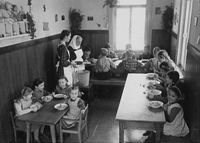
Abstract: MUSE 26
Negleted and endangered?
Residential care in Baden-Wuerttemberg 1949-1975.
This temporary exhibition of the Wuerttemberg Museum of Psychiatry at Ravensburg-Weissenau was conceived by the Landesarchiv Baden-Württemberg (Federal Archive Baden-Wuerttemberg) in cooperation with the advisory board of the advice and counselling centre “Residential Care”. It offers insights in the everyday life of many children´s homes of the Federal German region from 1949 to 1975, as well as into the emotional world of their inhabitants, the former so-called children in care. The main aspects of the exhibition are Germany´s system of residential care as well as the role of youth welfare offices in the process of the residential placement or the living environment of the institutions of the residential care itself. The exhibition is supplemented by the presentation of the current refinement process of the history of the residential care. Finally, there is a look into the today´s residential care and youth welfare. The exhibition is shown at the location of the Centre of Psychiatry Südwürttemberg in Ravensburg-Weissenau from mid-August to mid-October 2017. It was presented by the Wuerttemberg Museum of Psychiatry at the Centre of Psychiatry Südwürttemberg. Co-operation partner is the Institute of Social Professions Ravensburg (IFSB).
Curative management at the Wuerttemberg Museum of Psychiatry: Dr Bernd Reichelt.
Responsible for the Wuerttemberg Museum of Psychiatry: Dr Bernd Reichelt, Prof. Dr Thomas Müller
Exhibition period: from 10 August to 18 October 2017.
Abstract: MUSE 25
‚Artist-Patients’ in Weissenau – Ways of Escape and (Self-)Realisation.
This temporary exhibition of the Wuerttemberg Museum of Psychiatry presented in the foyer of the Central Building of the Centre of Psychiatry Südwürttemberg at Ravensburg-Weissenau, profiles three artists: Friedrich Pöhler, Gustav Mesmer and August Natterer. All three can both be considered artists and also had been patients of the former asylum at Weissenau. In their individual way, they enriched art in various fields. The photographer Friedrich Pöhler found his subjects on the Alb region nearby or in wider Upper Swabia. The fly-wheel manufacturer Gustav Mesmer and his artistic work have been a subject of discussion at the world exhibition of Sevilla, Spain, in 1992, and became very famous because of his flight experiments with the self-made curious devices. Painter August Natterer, a technically experienced inventor, too, today is considered to be a pioneer of surrealism. The exhibition presents the biographies of these artists und analyzes the differences between these persons in again, personality and art, as well as their similarities which can be traced back to e.g. experiences with contemporary psychiatry.
Curators: Prof Thomas Müller, Dr Uta Kanis-Seyfried
Exhibition period: 15 March 2017 to 31 July 2017 .
Abstract: MUSE 24
„recorded, persecuted, murdered. Sick and disabled people during National Socialism”.
Borrowed by the organizers, the temporary exhibition of the German Association for Psychiatry, Psychotherapy and Psychosomatics (DGPPN), which has been created in cooperation with the Foundation “Memorial to the Murdered Jews of Europe” and the Foundation “Topography of Terror”, was presented in the premises of the New Cloister in Bad Schussenried with support of the Centre of Psychiatry Südwürttemberg and the State Castles and Gardens of Baden-Wuerttemberg (Staatliche Schlösser und Gärten Baden-Württemberg). This temporary exhibition of the Wuerttemberg Museum of Psychiatry focused on the fate of the sick and disabled people, who were victims of exclusion, forced sterilization and mass murder with active participation of psychiatrists, neurologists, pedestrians and other medical specialists, administrative officials and nurses. From 1934 onwards, up to 400.000 persons were sterilized against their will, more than 200.000 persons from the asylums were murdered. As a guideline, the exhibition raises the question of the “value of life”. On the basis of patient records, the exhibition presented individual biographies and examined the tragic fate of the victims, also motives of the perpetrators and accomplices, as well as the attitude of the opponents. Another focus of the exhibition is on the confrontation and public debate with these crimes from 1945 to today.
Responsible on the part of the DGPPN: Prof. Dr Frank Schneider
Responsible on the part of the Castles and Gardens of Baden-Wuerttemberg: Hans-Joachim Moll
Responsible on the part of the Wuerttemberg Museum of Psychiatry: Prof. Dr Thomas Müller, assisted by Dr Uta Kanis-Seyfried and Dr Bernd Reichelt
Exhibition period: from 8 April 2017 to 06 June 2017.
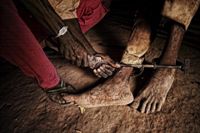
Abstract: MUSE 22
Exhibition ‘Kettenmenschen’ [People in chains] – dealing with the mentally ill people in West Africa“
Thousands of the mentally ill people in the Ivory Coast and in Benin live as so-called ‘Kettenmenschen’ [people in chains]. They are chained up to a tree or locked up in dark sheds. The society is afraid of them. In accordance with West African beliefs, the mentally ill people are possessed by demons. Since 1991, the local Catholic organization ‘St. Camille de Lellis’, under the direction of its founder Grégoire Ahongbonon, is releasing these people from their chains and getting them to so-called centers of therapy. More than 15 000 people in 15 centers in the Ivory Coast and Benin have been treated so far. The aim of the treatment is the return of the patients to the villages. The society “Friends of St. Camille” founded in 2003 is an association supporting the psychiatric work. In order to improve the psychiatric care, the specialists as physicians and nurses are travelling to West Africa.
The exhibition is describing individual cases in the form of personal reports and large-format portraitures. This project is a co-operation of the “Friends of St. Camille” and the ‘MuSeele’, a Museum of Psychiatry in Göppingen. The exhibition was presented by the Wuerttemberg Museum of Psychiatry in Zwiefalten in the period March until October 2016.
Responsible for the Wuerttemberg Museum of Psychiatry: Dr Bernd Reichelt.
Exhibition period: from March 16 to October 15, 2016.
Photo: Heinz Heiss
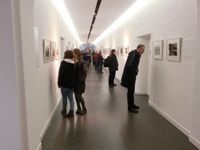
Abstract: MUSE 23 / Reic 3
Friedrich Pöhler (1867-1921) – Patient and Photographer
Friedrich Pöhler was one of the first photographers in south-western Wuerttemberg who professionally took portraits and everyday photography. During his professional activity between 1909 and 1910 in Wilhelmsdorf, numerous remarkable photographs were taken which impressively reflect the village and bourgeois life in Upper Swabia at the beginning of the 20th century. Mentally ill since the early adulthood, Friedrich Pöhler balanced on the fine line between the normality of the everyday life and a multitude of stays in psychiatric asylums. The exhibition (February 26 – August 28, 2016) in the Building 1 – an exhibition aisle of the Centre for Psychiatry Reichenau – shows his photographic oeuvre and for the first time gives also an insight into the biography of this man, into his struggle for a self-determined life, into his being trapped in illness and (petty-) bourgeois conventions. At the same time, it offers an authentic look at the contemporary medicine at the turn of the 20th century and the way of how physicians deal with their patients.
Responsible for the exhibition: Dr. Uta Kanis-Seyfried.
Projected processing period: 2013-2014. Exhibition period: February 26 – August 28, 2016.
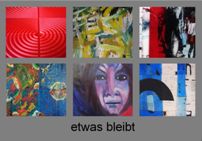
Abstract: MUSE 21
Art exhibition ‘etwas bleibt’ (‘something remains’) of the ‘Inklusionskonferenz’ of the administrative district of Reutlingen
In order to implement the UN Convention on the Rights of Persons with Disabilities at the municipal level, the administrative district of Reutlingen in cooperation with district towns and municipalities as well as with all relevant actors established the model project ‘Inklusionskonferenz’ (‘inclusion conference’) in 2014, which is directly assigned to the district administrator [Landrat]. The conference is a network of all participants shaping inclusion in the municipal space. Of particular importance is the participation of people with handicaps, relatives and self-help groups as experts from their own experience. The travelling exhibition ‘something remains’ is an important component as well. It was developed and initiated by the office of the inclusive conference within the framework of the national public campaign ‘duichwir’. Six artists from the ‘Landkreis’ Reutlingen present their access to inclusion in various ways. Renate Quast (Reutlingen), Erich Rosenberger (Reutlingen), Norman Seibold (Grafeneck), Birgit Sonnhof (Reutlingen), Karl Striebel (Münsingen) and Helm Zirkelbach (Kohlstetten) offer an impressive range of artistic diversity with painting, etching, photography as well as different genres and techniques.
The exhibition was shown in Reutlingen and in Bad Urach in 2015. From October 2015 to February 2016, it was shown by the Wuerttemberg Museum of Psychiatry in.
Responsible for the Wuerttemberg Museum of Psychiatry: Dr Bernd Reichelt. Location: ‘Verwaltungsbau’, ZfP Südwürttemberg, Zwiefalten.
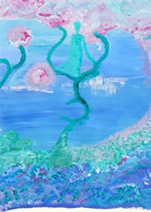
Abstract: MUSE 20
An inclusive art project in the framework of the Ravensburg art exhibition „I am a plant. Nature processes in the art”.
In 2014, the project “Impulses Inclusion” supported by the Ministry for Social Affairs launched cooperation between the Kunstmuseum Ravensburg (Art Museum Ravensburg) and the Centre for Psychiatry Suedwuerttemberg. An inclusive drawing competition was the starting signal for a common aim: the medium of art as a decisive part of various workshops and offers should remove barriers between social groups and create space for encounters. In January 2015, an “inclusive atelier” could be established in the premises of the School of Design. This Ravensburg atelier is a meeting place for people with and without mental impairments, where they can share their artistic work. The door is open for all people: who wants to know itself in art und enjoy coming to talk with like-minded persons, is welcome. Motivated by the great interest in the drawing competition in 2014 and inspired by the current exhibition “I am a plant. Natural processes in the art” in the Kunstmuseum Ravensburg, the inclusive atelier in cooperation with the Kunstmuseum Ravensburg organizes another drawing competition. People of all population groups and beyond the administrative district could be achieved by a broad advertising in the public sphere and in the communal psychiatric association as well as by many guests of the inclusive atelier. From Constance to Isny, people with and without disabilities, professional artists, also asylum seekers worked together. This year, 40 participants focus on the theme of the mentioned contemporaneous exhibition, which takes up the relationship between man and nature. An independent expert jury selected seven particularly impressive pictures from the works anonymously presented. Members of this jury were: Dr. Nicole Fritz, Kunstmuseum Ravensburg; Barbara Ehrmann, artist from Ravensburg; Priv.-Doz. Dr. Thomas Röske, Head of the Collection Prinzhorn, Heidelberg; Dr. Mike Konrad, Centre for Psychiatry Suedwuerttemberg, Ravensburg as well as Roland Wagner, Head of the School of Design, Ravensburg. The pictures were awarded as a part of an award ceremony on 16 July 2015 in the Kunstmuseum Ravensburg. The awarded artists were: Evelin Bosem, Marie- Luise Kraiser, Jana Mendler, Birgit Seele, Bea Wäscher, Wolfram Galuschka, Martin Kremsler. For purposes of the extension of the exhibition, the participants of the atelier chose another seven pictures, which will go along with the awarded pictures on exhibition travel. Following artists were selected: Theresa Larosa, Daniela Fabio, Katrin Filbert, Claudia Ruf,
Jamin Laminsesay, Christian Lord, Hubert Schwarz.
Organisers of the competition with the exhibition: Art Museum Ravensburg and Centre for Psychiatry Suedwuerttemberg.
Curators: Dr. Michael Konrad (Head of Department Sheltered Home of the Centre for Psychiatry Suedwuerttemberg in Ravensburg), Dr. Nicole Fritz (Head of the Art Museum Ravensburg).
In charge of the Museum of Psychiatry: Prof. Dr. Thomas Müller
Host institution: akademie südwest of the Centre for Psychiatry Suedwuerttemberg. Site: akademie südwest, New Cloister, Bad Schussenried, Wuerttemberg.
Opening event: Wednesday, 21 October 2015 at 17.00.
Exhibition period: 21 October 2015 to 31 January 2016.
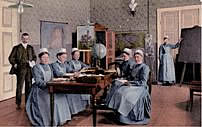
Abstract: MUSE 19
„… mit gewohnter Pflichttreue.“ The education of psychiatric nursing in Saxony and Wuerttemberg
The process of professionalization of the psychiatric nursing in Germany started in the state of Saxony. In 1888 Saxony was the first German State organizing the education of psychiatric nursing in a central way. In Wuerttemberg the central standards of nursing education were not established before 1912. The Exhibition is focused towards the education and the daily work of psychiatric care in Saxony and Württemberg during the 19th and 20th century. The exhibition is a cooperation of the Wuerttemberg Museum of Psychiatry, the Saxon Museum of Psychiatry and the “Stiftung Sächsische Gedenkstätten”. The first and main part of the exhibition is grounded on the touring exhibition “125 years of education of psychiatric nursing staff in Saxony”. This exhibition had been worked out by the curators Dr. Boris Böhm, director of the memorial Pirna-Sonnenstein and Thomas R. Müller, head of the Saxon Museum of Psychiatry. The second part of the exhibition is composed of exhibits of the Wuerttemberg Museum of Psychiatry and research results of the development in Wurttemberg. Responsible for this exhibition is Dr. Bernd Reichelt from the Research Unit for History and Ethics of Medicine at the Centre for Psychiatry Südwürttemberg. Exhibition duration: 20 May – 31 August 2015.
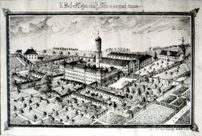
Abstract: SCHU 4/MUSE 8
„From pastoral care to soul care“. The Königliche Heil- und Pflegeanstalt Schussenried (The Royal Asylum Schussenried)
„The hidden magnificence – life behind the monastery walls“. This is the title of a permanent exhibition which is presented in the newly established museum Kloster Schussenried (Monastery Schussenried) since May 2010. The monastery building owned by the “State Castles and Gardens” of Baden-Wuerttemberg presents an exhibition in five rooms. The emphasis of the exhibition, which was arranged by a team of the State Museum in Stuttgart, is the church history of the Canonical Order of Premonstratensians which was resident there till 1803. Another focus of the exhibition is on the secular use of the monastery, the iron melting factory “Wilhelmshütte” and the Royal Asylum Schussenried (Königliche Heil- und Pflelgeanstalt Schussenried) where mentally ill people have been treated since 1875. During 120 years, the hospital´s everyday life also took place in the rooms of the former monastery building, most recently till 1996 in the field of rehabilitation and social therapy.
By means of the professional support on the planning and conception by the Research Unit for the History and Ethics of Medicine of the Centre for Psychiatry Suedwuerttemberg / Clinic of Psychiatry and Psychotherapy I of the University of Ulm, almost one fifth of the whole exhibition area deals with the history of psychiatry in Schussenried. The numerous exhibits and the varied historic visual material are from the in-house fund of the State psychiatric hospitals. The different aspects on the history of psychiatry are presented and analysed in the exhibition. The spectrum of issues ranges from the placement of the patients in the hospital to their physical care and the diverse therapies, leisure activities and employment opportunities for patients.
According to modern pedagogical concepts presented in a clear and informative way, the visitors of the exhibition are introduced to all aspects which were relevant to the “salvation of the soul”. Inglorious oppressive times like the so-called Third Reich also are presented (this issue is developed and described in detail in the Wuerttemberg Museum of Psychiatry in Zwiefalten). The question at the end of the exhibition is a touching one: “What remains?” – of the human, of the individual and his personality?
Cooperation partners of the „Castles and Gardens of Baden-Wuerttemberg“. Prof. Dr. Thomas Müller, Dr. Uta Kanis-Seyfried (responsible for the contents presented in the room “secular use of the monasteries in the Upper Swabia”).
Abstract: ASIEN 1
Knowledge transfer and modernization discourse in the medicine. Germany and Japan, approx. 1880-1950.
The research cooperation results from the cooperation work on the project DFG-MU 1804/1-2, which will be completed in the near future. This research cooperation refers thematically to the field of history of medicine, in particular to the transfer of knowledge to the medical discipline of psychiatry. With respect to the late 19th and 20th centuries, Japan and Germany make not only an interesting example of a systematic international comparison. Due to their close scientific relations – far beyond medicine – both countries are also suitable as a space for the analysis of the transnational knowledge- or science transfer. There was particular interest in theoretical concepts of disease, instrumental diagnostics, architectural and infrastructural concepts or curricular development etc. In the field of the clinical psychiatry, the Japanese physicians were interested i. a. in the German debates on health care of the psychiatric ill. Regarding the Japanese reception of the debates on reasonable care concepts in psychiatry, the diverse adaptations of European models to Japanese needs are of special interest. Within the framework of a knowledge import from the European context, there were discussions on i. a. internal Japanese conflicts regarding the diverged lines of development of the Japanese medicine against the background of the “modernisation” in the Meiji era.
Project: Research project for free publication. Cooperation partner: Prof. Dr. Akira Hashimoto, Dept. for Social Welfare, University of Aichi Prefecture, Aichi / Japan, Prof. Dr. Thomas Müller.
Planned processing period: long-term project. Intermediate results see “Publications”.
Abstract: EUROPA 3
Knowledge transfer and cultural policy from the German-Turkish perspective, approx. 1920-1950
The research cooperation between the Unit for History and Ethics of Medicine at the Medical Faculty of the University of Istanbul and the local Research Unit refers to the history of the migration of German-speaking scientists to Turkey, which was associated by the knowledge transfer and the development of bilateral relations of these states. The focus is on the professional group of the physicians, which is, however, not strictly limited on this one. Regarding the knowledge and scientific transfer between these countries, other academic fields also are of high relevance. Interdisciplinary overlaps concerning the medical and other scientific fields result from biographical and infrastructural reasons. A quantitatively significant part of these immigrants left for Turkey represents those scientists who were forced to leave the German-speaking countries. Their immigration was not a planned one. This concerned especially Jewish and / or politically persecuted scientists in the 1930s and 1940s. For obvious reasons, this project focuses on the phase of the establishment of a secular state under the leadership of Kemal Atatürk from a Turkish perspective.
Project: Research project for free publication. Cooperation partner: Univ.-Doz. PD Dr. phil. Arýn Namal, Unit for Ethics and History of Medicine, Medical Faculty Istanbul of the University of Istanbul; Prof. Dr. Thomas Müller. Author: N.N. Planned processing period: 2010—2016.
Abstract: EUROPA 5
“Local border traffic”. Transnational relations in psychiatry of the Lake Constance Region. 1860-1970
The Lake Constance region and its three neighboring states have both interesting similarities in the psychiatric development and significant differences. The project EUROPA 5 focuses on temporary discourses, practices and phenomena. This includes dealing with Wilhelm Griesinger’s demands for a treatment outside the hospital, the relations between the developing psychotherapeutic schools and related facilities. The project also deals with the development of the psychiatric reform in the 1920s, the position on the political development such as the National Socialist psychiatry in Germany and Austria and dealing with new therapeutic methods (Rorschach-Test, the “discovery” of Imipramin in Münsterlingen etc.). Synergetic effects and links concerning the Projects REIC 1 and REIC 2 are planned.
Organisation: Prof. Dr. Thomas Müller (Weissenau), Dr. Gerhard Dammann (Münsterlingen), Prof. Dr. Klaus Hoffmann (Reichenau).
Cooperation partners and collaborators: Dr. Bernhard Grimmer (Dr. Simone Bley (Münsterlingen), Ralf Rosbach (Reichenau), Dr. Cornelia Thaten (Münsterlingen), Prof. Dr. Henning Wormstall (Schaffhausen), Prof. Dr. Albrecht Hirschmüller (Tübingen), Dr. Jörg Püschel (Schaffhausen), Dr. Heinz Faulstich (Reichenau).
Planned processing period: long-term project. Interim results see „Publications“.
Abstract: EUROPA 6
The Psychiatry of South Württemberg under French occupation 1945-1949
After the end of the Second World War in May 1945, the French occupation zone was established in the southwest of Germany. It included the Saar and the states of Rheinland-Pfalz, Baden and Wuerttemberg-Hohenzollern. The French occupation ended in September 1949 when the Federal Republic of Germany had been founded. During the occupation the French military government was responsible for the public asylums in Württemberg. The aim of the project is to highlight the psychiatry of Württemberg during that period examining the examples of the asylums of Schussenried and Zwiefalten.
On the one hand the focus is on everyday life in the psychiatry in the years 1945 to 1949. On the other hand it is focusing on the actions of the French authorities concerning the psychiatry in Württemberg. First of all the project is dealing with the afterward influence of the “euthanasia” of the National Socialism. Furthermore the project is dealing with the transfer of knowledge between the French and the psychiatry in Wuerttemberg as well as with the influence of French concepts of psychiatry in Wuerttemberg.
Dr. Bernd Reichelt, Prof. Dr. med. Thomas Müller, M.A.
Status: Long-term project for free publication (2013-2024).
Abstract: REIC 2
The farewell from the total institution. The development of psychiatry in Southern Baden and Switzerland from 1945 to 1996. With an emphasis on the development of the Psychiatric State Hospital Reichenau since December 1949
After fundamental works on the history of this institution (namely by Faulstich, Hoffmann, Moser and others), this research project examines the history of psychiatry in today´s Centre of Psychiatry Reichenau (ZfP) near Constance in the period after 1945. Another subject of research is the comparison of the development of psychiatric care in Southern Baden with those in Switzerland by the end of the World War II. Concerning this, there is a wider stock of still unprocessed historical sources. Especially at the ZfP there were problematic staff continuities until well into 1980s, which hampered a historical reappraisal. The project focuses on the development of a more humane treatment of the psychiatric ill in the social and economic context of the development of the young Federal Republic of Germany. Based on the hypothec of the Nazi extermination campaign against the psychiatric ill and mentally disabled (forced sterilization, “euthanasia”, “starvation deaths”), how did it come to the establishment of an open psychiatric hospital with modern therapeutic and rehabilitative possibilities? Another focus of research is the development of medicine and economics and their impacts on the Southern Baden asylums after 1945. How did the economic conditions for psychiatry change since 1945? Since the health reforms of the 1990s, economic approaches in medicine have been introduced. Is it possible to determine the impacts on psychiatry in Southern Baden? Are similar developments in Switzerland detectable in this period?
Author: Ralf Rosbach. Supervisor: Prof. Dr. Clemens Wischermann, University of Constance; Prof. Dr. Klaus Hoffmann, CPR Reichenau/Constance. Consulting: Prof. Dr. Thomas Müller.
Current status: Acedemic qualification work, planned from 2009 to 2016.
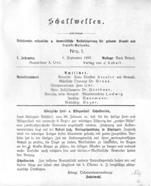
Abstract: SCHU 2
The Wuerttemberg asylum magazine „Schallwellen“ („Sound waves“) (1897-1936) with particular regard to political and social change. Contemporary history between asylum psychiatry and everyday world
The project deals with the Wuerttemberg asylum magazine „Schallwellen“ created and published by the staff of the psychiatric hospital Bad Schussenried from 1897 till 1936. The printed texts show that the readers of the magazine were not only provided with information regarding the topics such as „instruction and amusement“: The contents of this written medium were also linked to current world events. The microcosm of life behind the asylum walls kept in constant contact with the macrocosm of the outside world and was permeated by all social, economic and political changes. Although the asylum magazine offered a variety of different expressive forms (the spectrum ranges from comments to short announcements, reports regarding travelling, flora, fauna and architecture, fictional narrations as well as jokes and word games), the “Schallwellen” also reflected the interests of people at the turn of the century, during the First World War and the Great Depression in the late 1920s as well as under the rule of the National Socialists.
Author: Uta Kanis-Seyfried.
Current status: research project for free publication. Projected processing period 2009-2024.
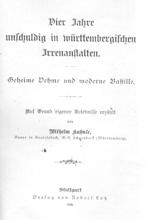
Abstract: SCHU 3
Lay Literature on Psychiatry
Criticism on psychiatry, its medical representatives and the asylums is not new. Already in the 19th century there was a resistance movement on the part of patients and enlightened society. In front of this background, there was an intensive discussion on the institutional form of the psychiatric care. For example, on the basis of the so-called “Irrenbroschüren” (“Brochures of Sick”) which were printed in small publishing houses and then made public, the patients who believed themselves to be victims of the unjust committal to a mental asylum, could demonstrate their anger on it in this written medium. These personal testimonies do not only show individual life´s journeys which were autobiographically written by the patients. These documents rather demonstrate a picture based on the personal experience concerning contemporary legal situations, bureaucratic randomness and state regulations of the disruptive, “querulous” personalities. In this regard, the case of the patient like Wilhelm Kuhnle attracted great public attention. Kuhnle also believed himself to be a victim of an unjust committal to the psychiatric asylum Bad Schussenried, where he spent four years. In contrast to the journal of the pastor Heinrich Hansjakob published in 1895, Kuhnle´s work (it appeared in the Stuttgart publishing house Robert Lutz in 1894) demonstrates a critical point of view on psychiatry und brightens the life inside and outside the asylum walls in a completely different way. Hansjakob´s publication with the title “Aus kranken Tagen” (“From days of sick”) describes his voluntarily stay lasting for several months in the asylum of Illenau, where Hansjakob was looking for relief of his “nervous deviltries”.
Authors: Uta Kanis-Seyfried / Thomas Müller.
Current status: research project for free publication. Projected processing period 2009-2024.
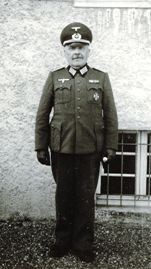
Abstract: WEIS 3
Psychiatric work between implementation of the so-called “euthanasia” and refusal. The Wuerttemberg psychiatrist Maximilian Sorg and the medical scope for action during National Socialism (AT)
The object of this research project is the biography of the physician Maximilian Sorg worked in the former asylums of Weissenau, Weinsberg and Zwiefalten. The project deals with his attitude and activities in the Third Reich as well as in the course of the reparations process in the Federal Republic of Germany. The work combines biographical and institutional-historical methodologies with the research interest of the studies on history of medicine during National Socialism. Sorg´s career seems to be particularly suitable for researching of the possible scope for action of the physicians in the asylums affected by the so-called “euthanasia”. Sorg´s behaviour is reviewed in comparison with the medical peer group.
Projekt: Akademic qualification work. Authors: Martina Fonrobert (born Henzi). Supervision: Prof. Dr. Thomas Müller, Prof. Dr. Gerhard Längle.
Planned processing period: 2008-2016.
Abstract: WEIS 8
Compulsory sterilization at the former “Heilig-Geist-Spital” (“Hospice of the Holy Spirit”) in Ravensburg (before 1945)
According to the current state of research, approximately 360.000 sterilizations on women and men were carried out in the whole German Reich on the basis of the “Law for the Prevention of Offspring with Hereditary Diseases” from 14 July 1933, which came into force in January 1934. On the basis of the former concept, the reproduction of these persons was unwanted. In case of refusal, the persons concerned were objects of a compulsory sterilization. Such compulsory sterilizations on the mental ill and people with mental handicaps were carried out in large numbers in the 1930s and 1940s. These patients were accommodated in the former asylum of Weissenau, the St. Gertrudis asylum in Rosenharz and the former so-called school for the deaf mute in Wilhelmsdorf. The persons persecuted for ethical or “racial” reasons were also objects of forced sterilization. Among them were Sinti and Roma from Ravensburg. Numerous pregnancies among the so-called forced labourers were terminated in municipal institutions of Ravensburg during the Second World War. According to the current state of research, 602 persons were objects of compulsory measures at the former municipal hospital “Heilig-Geist-Spital” in Ravensburg. The project should work out a first research status concerning these compulsory operations and measures on the basis of the evaluation of the patient files and care files of the institutions concerned.
Projekt:
1. Publication of the research results on the basis of free articles
2. Creation of a memorial in remembrance of the victims of the compulsory sterilization
Authors:
Marc Spohr, M. A., contact partner at the Centre for Psychiatry Suedwuerttemberg: Prof. Dr. Thomas Müller (authors of a mutual publication).
Cooperation partners:
Ralph Zodel (General Manager of the foundation “Heilig-Geist-Spital”); Dr. Franz Schwarzbauer (Head of the Cultural Office); Dr. Andreas Schmauder (Head of the Municipal Archive of Ravensburg).
Projected processing period: 2013-2017.
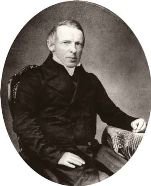
Abstract: ZWIE 5
Live and work of the medical director Carl von Schaeffer (1808 – 1888)
This project focuses on the one of the most important protagonist of psychiatry in Southern Wuerttemberg. The genre of the biography as a historiographic method is i. a. suitable for investigating the role of the key persons within the framework of this psychiatric context. Von Schaeffer was director of the psychiatric sanatorium Zwiefalten – the first Königlich-Württembergischen Irrenanstalt. As medical director he dealt with the consequences of the debate on the issue of separation / connection of asylums on the one hand and nursing homes on the other. Further aspects of this project are von Schaeffer´s conception of the psychiatry, the characteristics of his psychiatric-therapeutic innovations and his position in the contemporary debates.
Project: Academic qualification work. Author: Veronika Holdau. Supervision: Prof. Dr. Thomas Müller, Prof. Dr. Gerhard Längle.
Planned processing period: 2008-2016. The project was submitted in 2015. Currently, the project is being assessed.
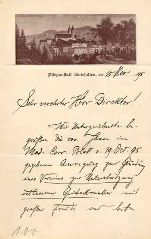
Abstract: ZWIE 6
The “Benevolent society for mentally ill and emotionally disturbed persons in Baden-Wuerttemberg” (der “Hilfsverein für Nerven- und Gemütskranke in Baden-Württemberg”). Civic engagement and social re-integration of the mentally ill in a historical perspective
In addition to the institution’s internal sources, this approach would especially rely on historical sources beyond the “walls of the asylum” (Bartlett and Wright). This method makes it possible to involve family networks as well as connections between relatives of the psychiatric ill, which are suitable to research the work of the benevolent societies using the example of South Wuerttemberg. Contemporary journalistic articles and literary sources complete the existing and comprehensive sample of primary sources. The research interest focuses on the “external” view of the medical laymen concerning the asylum. The assignee of the “Benevolent Society”, the “Benevolent Society of Baden-Wuerttemberg for Mental Health” (der “Baden-Württembergische Hilfsverein für seelische Gesundheit”) is connected with our institution.
Project: Akademic qualification work. Author: Sylvia Luigart. Supervision: Prof. Dr. Thomas Müller, Prof. Dr. Gerhard Längle.
Planned processing period: 2010-2016.

Abstract: ZWIE 7
Zwiefalten´s patients in the self-perspective. An analysis of psychiatric medical files for the period 1937-1984
The project focuses on so-called ego-documents. In the still relatively young tradition of the “history from below” (Roy Porter), the perspective of the patients should be taken into account. Classical sources such as patient files could be completed by file enclosures containing, for example, not only letters and post cards, but also drawings and other ego-documents, as they are known from the collection “Prinzhorn-Sammlung”. In the German speaking countries there are already some works on this research, although this topic on Zwiefalten´s archives has not yet been processed.
Project: Academic qualification work. Author: Martin Höhn. Supervision: Prof. Dr. Thomas Müller, Prof. Dr. Gerhard Längle.
Planned processing period: 2010-2016. The project was submitted in 2015. Currently, the project is being assessed.

Abstract: ZWIE 10
“Patient-working”. Agricultural and manual forms of work in psychiatry between therapeutic demand and economic interests
The work of patients in psychiatric asylums seems to be as old as the asylums themselves. Any therapeutic innovation, which relies on economic or economising work, is positioned within a stress ratio between the aid for the reintegration into social relations on the one hand and economic advantage for the asylum on the other. This project should examine the Zwiefalten systems of the therapy.
Project: Academic qualification work. Author: Martina Schmidt (born Huber). Supervision: Prof. Dr. Thomas Müller, Prof. Dr. Gerhard Längle.
Planned processing period: 2008-2016.
Kurzbeschreibung: ZWIE 18/ EUROPA 7
From South Tyrol to Wuerttemberg. The “resettlement” of South Tyrol mentally ill patients in the framework of the German-Italian option agreement
The focus of research here is on the course of the transfer of South Tyrol patients to the Southern Wuerttemberg asylums Zwiefalten and Schussenried as well as in part to Weissenau in 1940. The subjects of interest are the state pre-negotiations, the so-called option treaties between the German Reich and Italy as well as the treatment of the South Tyrol patients in the German asylums. On the one hand, the issue focuses on the treatment of these patients in comparison with the native patients. On the other hand, in the setting of the current status of research, it can be assumed that there was an unequal treatment (for example organizational and foreign policy subjects) of the South Tyrol patients in comparison with the “ethnic Germans” from other regions or “dispersed settlements” abroad. Further comparison levels of the research are the so-called repatriations or negotiations between the legal successor states regarding the relocation (transfer) of the patients from 1945 onward.
Authors: Prof. Dr. med. Thomas Müller, M.A., Dr. Uta Kanis-Seyfried, M.A., in cooperation with Kirsten Düsberg (Udine, Italy).
Current status: research work for free publication. Planned processing period: 2015-2026 (long-term project). Interim results already published see „Publications“.
Abstract: ZWIE 19
History of paramedical therapy in the Southwest German psychiatry after 1945
Background: Over the years, the Psychiatry-Enquête in 1975 was apprehended as a caesura in historical research, whereas the years before were reduced to the supposed success story of the psychotropic drugs. Reform approaches as well as alternative treatment and therapy concepts that had already been applied for some years, which have also partially been supported by the previous or parallel use of the psychotropic drugs, received little attention in research so far. The forms of paramedical therapy are the subject of this research project. The focus is first on exercise therapy [Bewegungstherapie], as it was developed in the psychiatric hospitals of Wuerttemberg. Other paramedical therapy forms as music, art and occupational therapy [Beschäftigungstherapie] will be considered in the further course of the project. The focus of interest is on the professionalization and vocational education processes in the individual therapies as well as their importance in the treatment process against the background of a changing psychiatric care. In order to approach the complex subject, approaches of the so-called Histoire croisée will be used.
Authors: Dr Bernd Reichelt, PD Dr Thomas Müller, M.A.
Current status: lecturers, among others in the interdisciplinary working group “AK Bewegungstherapie bei psychischen Erkrankungen”, forthcoming publication. Projected processing period: 2013-2024.
Abstract: DFG-Projekt MU-1804/1-2
Foster care in France and Germany. History, debate and reception in comparison, c. 1850-1914
There was hardly an issue, which was discussed as controversially and aggressively in the second half of the 19th century as the problem of the asylum. This debate aroused repeatedly and was linked to the professionalization of psychiatry. Appearing in similar phases, the debates in Germany and France were directed at the model of the former precursor Gheel in Flemish Belgium. First, on the basis of the international comparison, the project works out the similarities or differences of the discourse and the institutional implementation of psychiatric foster care in both countries. Furthermore, the scientific transfer between these countries will be analyzed. The project focuses on the period from 1850 to 1914, as this time covers the main emphases of the debates as well as the relevant implementation attempts of the early development of foster care. This research forms a basis for the historical understanding of the foster care, as the modern implementation of it becomes currently important in this country (Germany).
Cooperation partners (in alphabetical order):
- Bauerkämper, Arnd, PD Dr. phil., Historiker
Berliner Kolleg für Vergleichende Geschichte Europas (Geschäftsf. Leiter)
Freie Universität Berlin
Koserstr. 20
14195 Berlin - Brandého, Daniel, Sciences et Droits Sociales
Directeur-adjoint du Centre Hospitalier George Sand, Chargé des Affaires générales de la Communication de la Qualité
8, rue de l’Ermitage
F-18130 Dun-sur-Auron/18024 Bourges/18160 Chezal-Benoît - François, Etienne, Prof. Dr. phil., Historiker
Direktor des Frankreich-Zentrums der Freien Universität Berlin
Rheinbabenallee 49
14199 Berlin - Godemont, Marc, Clinical Psychologist, Director Research/Project Development
Psychiatric Hospital of the Flemish Community
Pas 200
B-2440 Geel - Hashimoto, Akira, Prof., Ph.D., Historiker
Aichi Prefectural University
Department of Social Welfare
Kumabari, Nagakute-cho, Aichi-gun, Aichi-ken
480-1198 Japan - Kaelble, Hartmut, Prof. Dr. phil. Dr. h.c., Historiker
Zentrum für Vergleichende Geschichte Europas (Direktor); Institut für Geschichtswissenschaften/Sozialgeschichte, Philosophische Fakultät I
Humboldt-Universität zu Berlin
Unter den Linden 6
10099 Berlin - Lardy, Jean-Claude, Juriste, Directeur Centre Hospitalier Spécialisé et
Grolleau-Vallet, Chantal, Direction des Soins
F-03360 Ainay-le-château - Schmidt-Michel, Paul-Otto, Prof. Dr. med., Dipl. Psych.
Zentrum für Psychiatrie Weissenau (Chefarzt der Abteilung Sektor-Psychiatrie)
Weingartshofer Str. 2
88214 Ravensburg
Project completed in 2013, academic examination and acceptation in 2014, publication in 2017.
Abstract: BERL 3
Psychoanalysis in German daily press (1945-1995)
As psychoanalysis was described by the Viennese physician Sigmund Freud in 1900, it first met with considerable resistance among experts and laymen. The reaction was founded in sexual content of psychoanalysis, the positivistic basis of medicine and the fact that Freud was a Jew. This fact was described by Freud in 1905 in his “Self-analysis”. This predominantly negative or ignored attitude changed soon and psychoanalysis quickly found a large and enthusiastic following. In spite of its later global establishment, psychoanalysis remained controversial and was often subjected to vehement attacks. This situation led to the view, especially within psychoanalytic societies, psychoanalysis would be reviewed either hushed up or mostly negative until today. As Freud did not revise these ideas at all and his followers went on with it, it is the initial aim of this work to represent and research the opinions or prejudices on psychoanalysis made by the public. The study of the specialist press as well as some newspapers shows that these opinions were greatly subject to change over time. This project proves on both statistical and qualitative level the main theses of the work deriving from the evaluation of the information that psychoanalysis has experienced at all times and continues to experience a very large and affirmative reception. According to the wide reception of psychoanalysis, which is in no way limited to the specialist press, four large German newspapers were selected as sources of different political background: from the “Frankfurter Allgemeine Zeitung” as a conservative paper to the “Süddeutsche Zeitung” and the “Frankfurter Rundschau” as liberal middle-stand papers to the “Tageszeitung” with its left-political spectre. Overall, the material includes 1.087 articles from the four selected newspapers contributed by 363 different authors. This project represents a new form of research on psychoanalysis in Germany. In 1999, the Austrian researchers Tichy and Zwettler-Otte wrote a complementary work showing the reception of psychoanalysis in the Austrian press (1895-1938) during Freud´s lifetime. Their outcomes show a broad effect of psychoanalysis in Austria, as it is indicated by the previously present evaluations for post-war Germany.
Author: Désirée Ricken; Supervision: Prof. Dr. Thomas Müller (University of Ulm, Centre for Psychiatry Suedwuerttemberg / Charité Berlin).
Current status: The advanced PhD project is currently being prepared for submission. Planned completion of the project: 2024.
Abstract: BERL 5
„Life is not easy, but somehow I am holding my own“. Life and work of the psychoanalyst Eric David Wittkower (1899-1983)
Research of this work is dedicated to life and work of the physician and psychotherapist Eric D. Wittkower. The aim of this study is the chronological and textual classification of his work and its integration in the biography of the author as well as in the historical, cultural and social context. Particular interest is focused on the essential stages of work and life of the author: Berlin – London – Montreal. Wittkower is considered to be a representative of the concept of “integrated medicine” in Berlin during the 1920s and an interdisciplinary pioneer in the area of the psycho-physiological, psychosomatic and psychiatric medicine as well as a founder of many institutions and associations. Despite this contribution to the various fields of the medicine, Wittkower is forgotten in this country. This research project pays tribute to his contribution to medical science.
Author: Hennig, Christina; Supervisor: Prof. Dr. Thomas Müller (University of Ulm, Centre for Psychiatry Südwürttemberg / Charité Berlin) in cooperation with Prof. Dr. Dr. G. Danzer (Charité Berlin).
Expected end of the project: in 2024.
Abstract: BERL 6
About the history of the abstinence in the psychoanalytic treatment. Change in definition and practical application
By means of a systematic comparison of the therapeutic practices of important psychoanalysts and within the respective therapeutic context, this project focuses on the development of the concept of abstinence in psychoanalytic treatment. This project critically examines the way, how abstinence, which is considered part of the psychoanalytical method itself, was handled in dealing with neurotic, “personality disordered”, psychosomatic or psychotic patients. The project focuses on various different analytical treatment methods, for example the individual treatment, the group treatment, the body-oriented methods, as well as the psychotherapy of psychotic patients. The objects of research are the scientific historical origin of the abstinence term, the most important controversial attitudes in the diachronic comparison as well as the changes, which this aspect of psychoanalytical psychiatry has experienced since its origin over the years. The current status of these aspects will be presented and discussed. Other points of interest are the role of the abstinence term concerning potential dependence of the patient as well as on the extent, to which patients are informed about the psychoanalytical method of treatment including possible risks or harmful effects – in the sense of a conventional legal consent. Another object of interest is the question, to what extent new findings regarding the abstinence term may have changed the method, and how they have done so. It makes sense to realise the changes, which the psychoanalytical method of treatment regarding the abstinence term had experienced throughout its history, because it seems as if the way, in which the therapy regarding the abstinence rules is being carried out, could essentially decide on the success of treatment. This research sheds light on the question, how the psychoanalytic method of treatment could be optimised for the benefit of the patient (and, not least, for the therapist).
Author: Schütz, Edith; Supervisor: Prof. Dr. Thomas Müller (University of Ulm, Centre for Psychiatry Südwürttemberg / Charité Berlin)
Current status: The advanced PhD project is currently being prepared for submission. Planned processing period: 2008-2016.
Abstract: BERL 7
Life and Work of the Psychoanalyst Paula Heimann (1899-1982)
The research project focuses on life and work of a famous psychoanalyst, who, furthermore, had a substantial influence on the Federal German post-war context. In particular, Paula Heimann became internationally known for her method developed concerning an understanding of the countertransference as a research instrument for the unconscious processes of the patient. The development of Heimann´s psychoanalytical thinking should be better understood on the basis of the reappraisal of her life. With the aid of this method it could be possible to work out the specificity of Heimann´s contribution not only to the psychoanalytical theory formation, but also to the psychoanalytical self-understanding until today. At the center of attention are Heimann´s forced emigration from National Socialist Germany, the related professional consequences as well as the life and work in London exile. The working relationship of Heimann to Melanie Klein, her position as so-called “crown princess” of Klein as well as the later separation from Klein´s thinking is of particular interest. Although Heimann remained in England throughout her life, there is also a need to examine Heimann´s “remigration” to the Federal Republic of Germany according to her theoretical, institutional-political and personal influence, also as a training analyst of Alexander Mitscherlich and as a mentor of the Frankfurt Psychoanalytic Institute. Heimann´s importance for the re-establishment of psychoanalysis in the Federal Republic can hereby be evaluated.
Author: Maren Holmes; Supervisor: Prof. Dr. Thomas Müller (University of Ulm, Center for Psychiatry Südwürttemberg / Charité Berlin)
Planned processing period: 2008–2014. Project is completed in 2014, academic examination in 2015. Mark: "summa cum laude", Charité Berlin, November 2015.
Research Projects on Ethics of Medicine
Archives
Abstract: MUSE 44
How to deal with anti-democratic and inhuman language „Man wird ja wohl noch sagen dürfen…“ [„One dare say at least…“]
The presentation of the travelling exhibition of the Documentation Centre Oberer Kuhberg Ulm (Dokumentationszentrum Oberer Kuhberg Ulm – DZOK) at the different locations of the Centre for Psychiatry Suedwuerttemberg is a result of the cooperation of the Historical Research with the DZOK Ulm. It was initiated – among other measures and activities – after the Weissenau conference on research-, memorial and education sites concerning the period of National Socialism in Upper Swabia in October 2018.
Attacking people verbally and attacking the democracy was part of the essence of National Socialism. The word “Lying press” [“Lügenpresse”], for example, was a battle term in National Socialist language usage that is used again today: in social media, in everyday life and in the politics of the right-wing populist and right-wing extremist parties. The exhibition „Man wird ja wohl noch sagen dürfen…“ [„One dare say at least…“] presents antidemocratic and inhuman terms from then and now; also actually neutral terms which can be used as weapons. The exhibition asks: What do these words mean? How were they used in the past and how are they used today?
Exhibition period in the State Archives Sigmaringen: 28.06.2023 - 11.08.2023
The opening of the exhibition will take place on June 27, 2023, at 6 p.m. in the Hall of Mirrors (“Spiegelsaal”) of the State Archives.
Responsible for the exhibition: Prof. Dr. Thomas Müller, Dr. Bernd Reichelt (Centre for Psychiatry Suedwuerttemberg); for the State Archives Sigmaringen: Dr. Franz-Josef Ziwes.
Abstract: MUSE 43
"Artist-patients" from Wuerttemberg and Baden. (Out-)paths and (self-)realisation
The temporary exhibition of the Wuerttemberg Museum of Psychiatry is an extension of an exhibition of the Wuerttemberg Museum of Psychiatry at the Weissenau site (MUSE 25). The exhibition shows the portraits of people who, in their individual ways, have enriched art in various fields. Since the conservation requirements for the works of these artists, which are in collections, no longer allow the originals to be presented at other exhibition venues, the travelling exhibition helps to bridge this gap. What all the artists have in common is that they have experienced mental illness. In addition to the artistically active patients Friedrich Pöhler, Gustav Mesmer and August Natterer, who were also patients of the former asylum Weissenau, the extended exhibition presents patients from other asylums in Wuerttemberg and Baden: Else Blankenhorn (Reichenau), Albert Speck (Zwiefalten) and Helene Maisch (Illenau). The exhibition presents the biographies of the artists and shows the personality and artistic differences between these people, as well as their similarities, which can be traced back above all to experiences with contemporary psychiatry. The contents of the exhibition on the patients Else Blankenhorn and Helene Maisch were created in cooperation with Winfried Klimm (Reichenau) and, with regard to Helene Maisch, with Hanna Sauer (Freiburg / Solingen) and Winfried Hoggenmüller (Achern).
Duration of the exhibition in the Saxon Psychiatry Museum in Leipzig (Germany): 12.07.–31.10.2023
Responsible for the exhibition: Prof. Dr. Thomas Müller, Dr. Uta Kanis-Seyfried, Dr. Bernd Reichelt. Responsible in Leipzig: Thomas R. Müller (Saxon Psychiatry Museum)
Abstract: MUSE 42
"Artist-patients" from Wuerttemberg and Baden. (Out-)paths and (self-)realisation
The temporary exhibition of the Wuerttemberg Museum of Psychiatry shows portraits of people who have enriched art in various fields in their individual ways. In addition, all artists have in common that they have experienced mental illness. Since the original works of art can no longer be presented at other exhibition venues today due to conservation requirements, this travelling exhibition aims to bridge this gap. In addition to the artistically active patients Friedrich Pöhler, Gustav Mesmer, August Natterer and Albert Speck, all patients of the former asylums in Weissenau, Schussenried and Zwiefalten, the exhibition also presents female patients from institutions in Baden: Else Blankenhorn (Reichenau) and Helene Maisch (Illenau).
The exhibition presents the biographies of the artists and shows the personality and artistic differences between these people, as well as their commonalities, which are mainly due to experiences with contemporary psychiatry. The exhibition content was developed by the team of the Wuerttemberg Museum of Psychiatry. Those on the patients Else Blankenhorn were created in cooperation with Winfried Klimm (Reichenau), and regarding Helene Maisch with Hanna Sauer (Solingen) and Winfried Hoggenmüller (Achern).
Vernissage and lecture on the artist Helene Maisch (1890-1942): 24.02.2023; speaker: Hanna Sauer, M.A. (Collection and Research, Centre for Persecuted Arts Solingen).
Exhibition period at the Illenau Arkaden Museum (Achern): 20.01.2023—02.04.2023
Responsible for the exhibition: Prof. Dr. Thomas Müller, Dr. Uta Kanis-Seyfried, Dr. Bernd Reichelt
Abstract: MUSE 41
How to deal with anti-democratic and inhuman language „Man wird ja wohl noch sagen dürfen…“ [„One dare say at least…“]
The presentation of the travelling exhibition of the Documentation Centre Oberer Kuhberg Ulm (Dokumentationszentrum Oberer Kuhberg Ulm – DZOK) at the different locations of the Centre for Psychiatry Suedwuerttemberg is a result of the cooperation of the Historical Research with the DZOK Ulm. It was initiated – among other measures and activities – after the Weissenau conference on research-, memorial and education sites concerning the period of National Socialism in Upper Swabia in October 2018.
Attacking people verbally and attacking the democracy was part of the essence of National Socialism. The word “Lying press” [“Lügenpresse”], for example, was a battle term in National Socialist language usage that is used again today: in social media, in everyday life and in the politics of the right-wing populist and right-wing extremist parties. The exhibition „Man wird ja wohl noch sagen dürfen…“ [„One dare say at least…“] presents antidemocratic and inhuman terms from then and now; also actually neutral terms which can be used as weapons. The exhibition asks: What do these words mean? How were they used in the past and how are they used today?
Exhibition period at the Centre for Psychiatry Reichenau: 01.12.2022 – 27.01.2023
The vernissage of the exhibition will be held on 01.12.2022, at 3 pm.
Responsible for the exhibition: Prof. Dr. Thomas Müller, Dr. Bernd Reichelt (Centre for Psychiatry Suedwuerttemberg); for the Centre for Psychiatry Reichenau: Carolin Renz und Hannah Koch.
Abstract: MUSE 39
"Artist-patients" from Württemberg and Baden. (Out-)paths and (self-)realisation
The temporary exhibition of the Wuerttemberg Museum of Psychiatry is an extension of an exhibition of the Wuerttemberg Museum of Psychiatry at the Weissenau site (MUSE 25) and will be presented in autumn 2022 at the Centre for Persecuted Arts in Solingen. The exhibition shows the portraits of people who, in their individual ways, have enriched art in various fields. Since the conservation requirements for the works of these artists, which are in collections, no longer allow the originals to be presented at other exhibition venues, the travelling exhibition helps to bridge this gap. What all the artists have in common is that they have experienced mental illness. In addition to the artistically active patients Friedrich Pöhler, Gustav Mesmer and August Natterer, who were also patients of the former asylum Weissenau, the extended exhibition presents patients from other asylums in Wuerttemberg and Baden: Else Blankenhorn (Reichenau), Albert Speck (Zwiefalten) and Helene Maisch (Illenau). The exhibition presents the biographies of the artists and shows the personality and artistic differences between these people, as well as their similarities, which can be traced back above all to experiences with contemporary psychiatry. The contents of the exhibition on the patients Else Blankenhorn and Helene Maisch were created in cooperation with Winfried Klimm (Reichenau) and, with regard to Helene Maisch, with Hanna Sauer (Solingen) and Winfried Hoggenmüller (Achern).
Exhibition period at the Centre for Persecuted Arts Solingen: 25.09.2022-20.10.2022.
Lecture on the artist Helene Maisch (1890-1942): 25.09.2022; speaker: Hanna Sauer, M.A. (Collection and Research, Centre for Persecuted Arts Solingen).
Responsible for the exhibition: Prof. Dr. Thomas Müller, Dr. Uta Kanis-Seyfried, Dr. Bernd Reichelt.
Abstract: MUSE 37
Dellmensingen Castle 1942. A Jewish Forced Old People's Home in Württemberg. With regional references to Zwiefalten and Tigerfeld
The presentation of the extended touring exhibition is the first result of a cooperation between the Research Unit for the History and Ethics of Medicine and the Museum of the History of Christians and Jews in Laupheim.
Content: In the course of the persecution and extermination of European Jewry by National Socialist Germany, a number of Jewish forced old people's homes were also established in Wuerttemberg from autumn 1941 onwards. Two of these institutions were established in Dellmensingen Castle, between Laupheim and Ulm, and in the former poorhouse in Tigerfeld, near Zwiefalten. In the spring of 1942, 130 Jewish Wuerttemberger, most of them elderly, were forcibly relocated to Dellmensingen and at least 47 to Tigerfeld. In August 1942, the forced old people's homes were finally closed and the remaining inmates deported to the Theresienstadt concentration camp. Only four people from Dellmensingen and two from Tigerfeld survived the Shoah. Both institutionally and biographically, there are connections to the Zwiefalten sanatorium, which in 1939 was declared by the Stuttgart Ministry of the Interior to be the collection point for Jewish patients of the psychiatric institutions of Wuerttemberg. Both the fate of the Jewish patients and the history of the Jewish forced old people's home in Tigerfeld are extensions of the content of the exhibition from Laupheim, for which the Research Unit for the History and Ethics of Medicine of the Centre for Psychiatry Suedwuerttemberg / Clinic for Psychiatry and Psychotherapy I of the University of Ulm is responsible.
Duration of the exhibition at the Centre for Psychiatry Suedwuerttemberg-Ravensburg, at the location Weissenau: 15.12.2022-01.03.2023.
Information on the vernissage will follow.
Responsible for the exhibition: Prof. Dr. Thomas Müller, Dr. Bernd Reichelt.
Abstract: ZWIE 21
„Gräberfeld X”, Tuebingen. Transferring bodies of deceased patients of the former psychiatric asylum Zwiefalten to the Anantomical Institute of the University of Tuebingen during the National Socialist era
Based on the reappraisal of the fate of people buried in the above mentioned “Gräberfeld X” (grave field) of the Tuebingen city cemetery, whose bodies were once had been used in the Anatomical Institute of the University of Tuebingen, the city of Tuebingen and the Eberhard-Karls-University of Tübingen are endeavoring to clarify jointly, and in the framework of an interdisciplinary research project the historical background of this actions of transfer. The Research Unit for the History and Ethics of Medicine contributes to this process of research. Within the framework of the asylums in southern Wuerttemberg, those corpses that had been transferred from Zwiefalten to Tuebingen have already been examined so far. On the one hand, possible selection criteria are recorded by evaluating the medical files of the deceased. All cases transferred from Zwiefalten are to be recorded in a database and compared with the documents of the Anatomical Institute of the University of Tuebingen in cooperation with the Tuebingen working group, headed by Prof. Benigna Schönhagen.
An analysis of the selection reasons is carried out – among other things – by randomly evaluating the medical files mentioned.
Responsible for the project: Dr. Bernd Reichelt, Prof. Thomas Müller.
Current status: lectures, publications. Projected processing period: 2020-2023.
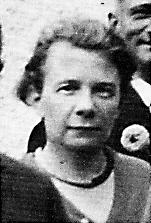
Abstract: WEIS 2
Psychiatry under National Socialism. The role of the physician Martha Fauser (1889 – 1975) in the so-called “euthanasia” in Southern Wuerttemberg (AT)
The object of this research project is the biography of the physician Martha Fauser, who worked in the former asylum Weissenau, as well as her role during the National Socialist period. The project integrates biographical and institutional-historical methodologies into the research interest of the Gender Studies and the Studies on the history of medicine during National Socialism. Fauser was a prominent figure in the context of the so-called action “T4” or the so-called “euthanasia”. She had to answer for her misconduct also in the frame of the legal process in the Federal Republic of Germany. At the same time, Fauser was the most high-ranking woman in the Wuerttemberg medicine or psychiatry during National Socialism.
Projekt: Akademic qualification work. Authors: Laura Richter (University of Mannheim). Cooperative Supervision: PD Dr Angela Borgstedt (Philosophy Faculty, University of Mannheim), Prof. Dr. Thomas Müller.
Current status: in 2015 completed and inspected work (state examination, higher education services, mark “very good”).
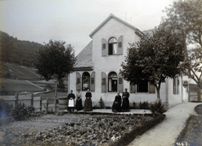
Abstract: ZWIE 8
Foster care and agricultural colony as extension systems of in-patient therapy using the example of Zwiefalten – Healthcare research in a historical perspective
The focus of this project is on a research approach, how classical institutional history (as an essential basis of every methodologically sophisticated research) is related to the aspects, which were representative for the 19th century, such as the debate on the so-called asylum of the mentally ill as well as its deficiencies. Specifically, in addition to the family care in Zwiefalten, there was an agricultural colony, which therapeutic, organizational and economic importance is to be researched in this project.
Project: Academic qualification work. Author: Jana Petit (born Kirchschlager). Supervision: Prof. Dr. Thomas Müller, Prof. Dr. Gerhard Längle.
Planned processing period: 2009-2023.
Abstract: ZWIE 9
Experiencing the world. The scientific journeys of 19th century psychiatrists from southern Württemberg and the transfer of knowledge in psychiatry
A scientific journey before taking up the post of medical director and for the purpose of acquiring scientific expertise and learning about the latest forms of diagnosis, therapy and care was common practice for long periods in the 19th century and was financed by the relevant ministries. This project analyses such business trips by Wuerttemberg hospital doctors. In addition to conveying scientific-medical, administrative or nursing expertise, particular attention is paid to the presentation of the later places of service of the persons studied and their journeys.
In the context of this work, the “import of knowledge” to Wuerttemberg and the export of knowledge from Wuerttemberg by means of scientific journeys by psychiatric experts will be analysed in particular. Analysis of primary sources from the regional archives of the Centre for Psychiatry Suedwuerttemberg and the responsible state archives (Sigmaringen).
Editing: Benjamin Siemens.
Co-operative supervision: Prof Dr Thomas Müller (initial supervision), Dr Uta Kanis-Seyfried.
Current status: Academic qualification thesis (currently suspended).
Abstract: BERL 1
Biographical Lexicon of Psychoanalysis. A biographical reference work of the founding of the Berlin Psychoanalytic Association in 1908 until the dissolution of the German Psychoanalytic Society in 1938
This research project deals with an encyclopaedic-biographical lexicon of the essential German representatives of psychoanalysis before 1933. In addition to the inherent quantitative research questions, there are qualitative research questions, which should also be commented. Furthermore, the relation between the oldest psychodynamic form of psychotherapy and the “conventional medicine” should be researched on the basis of some biographies during the investigation period. The project focuses, among others, on the question repeatedly raised by Freud regarding psychoanalysis isolated by the conventional medicine and supposedly marginalised. The persons related with the psychoanalysis as well as their teachings were already much more sustainable in the medicine at the beginning of the 20th century than is generally assumed.
Cooperation partners: Hermanns, Ludger M., Archives of the History of Psychoanalysis Koblenz / German Psychoanalytic Association / Berlin Forum for the History of Psychoanalysis, Berlin; Dr. Lockot, Regine, Berlin Forum for the History of Psychoanalysis, Berlin.
Planned processing period: currently suspended.
Abstract: MUSE 40
Dellmensingen Castle 1942: A Jewish Forced Old People's Home in Wuerttemberg. With regional references to Zwiefalten and Tigerfeld - at the Villa Lindenhof Cultural Centre, Blaustein
The Museum's touring exhibition on the history of Christians and Jews in Laupheim, expanded by the Research Unit for the History and Ethics of Medicine and presented for the first time in Zwiefalten, was shown in its entirety at another location. For about six months, the exhibition was on display at the Villa Lindenhof Cultural Centre in Blaustein near Ulm.
In the course of the persecution and extermination of European Jewry by National Socialist Germany, a number of Jewish forced asylums were also established in Wuerttemberg from autumn 1941. Two of these institutions were established in Dellmensingen Castle, between Laupheim and Ulm, and in the former poorhouse in Tigerfeld, near Zwiefalten. In the spring of 1942, 130 Jewish Wuerttemberg citizens, most of them elderly, were forcibly relocated to Dellmensingen and at least 47 to Tigerfeld. In August 1942, the forced old people's homes were finally closed and the remaining inmates deported to the Theresienstadt concentration camp. Only four people from Dellmensingen and two from Tigerfeld survived the Shoah. Both institutionally and biographically, there are connections to the Zwiefalten asylum, which in 1939 was declared by the Stuttgart Ministry of the Interior to be the collection point for Jewish patients of the psychiatric institutions of Wuerttemberg. Both the fate of the Jewish patients and the history of the Jewish forced old people's home in Tigerfeld are content-related extensions of the exhibition from Laupheim, for which the Research Unit for the History and Ethics of Medicine at the Centre for Psychiatry Südwürttemberg / Clinic for Psychiatry and Psychotherapy I of the University of Ulm is responsible.
Responsible for the exhibition: Dr. Bernd Reichelt, Prof. Dr. Thomas Müller
Exhibition duration in Blaustein: 1 May 2022 - 16 October 2022.
Abstract: MUSE 38
How to deal with anti-democratic and inhuman language „Man wird ja wohl noch sagen dürfen…“ [„One dare say at least…“]
The presentation of the travelling exhibition of the Documentation Centre Oberer Kuhberg Ulm (Dokumentationszentrum Oberer Kuhberg Ulm – DZOK) at the different locations of the Centre for Psychiatry Suedwuerttemberg is a result of the cooperation of the Historical Research with the DZOK Ulm. It was initiated – among other measures and activities – after the Weissenau conference on research-, memorial and education sites concerning the period of National Socialism in Upper Swabia in October 2018.
Attacking people verbally and attacking the democracy was part of the essence of National Socialism. The word “Lying press” [“Lügenpresse”], for example, was a battle term in National Socialist language usage that is used again today: in social media, in everyday life and in the politics of the right-wing populist and right-wing extremist parties. The exhibition „Man wird ja wohl noch sagen dürfen…“ [„One dare say at least…“] presents antidemocratic and inhuman terms from then and now; also actually neutral terms which can be used as weapons. The exhibition asks: What do these words mean? How were they used in the past and how are they used today?
Exhibition period at the Schussental-Clinic, Aulendorf: 14.10.–25.11.2022.
Vernissage to be announced.
Responsible for the exhibition: Dr. Bernd Reichelt, Prof. Dr. Thomas Müller. For the Schussental-Clinic in Aulendorf: Kerstin von der Heiden.
Abstract: MUSE 36
„Artist-Patients“ from Wuerttemberg and Baden
This temporary exhibition of the Wuerttemberg Museum of Psychiatry presents the extensional work following an earlier exhibition (MUSE 25). Portrays of people are presented, who have enriched art in various areas, each in his/her own individual way. Since the conservation requirements for original works no longer allow exhibiting the originals in these locations, where they once had been created, this temporary exhibition aims at bridging this perceived gap. All artists are united in some way or another – by the experience of mental illness. In addition to the artistically “active” patients as Friedrich Pöhler, Gustav Mesmer and August Natterer, the extended exhibition presents patients from other psychiatric institutions in Wuerttemberg and Baden. These are Else Blankenhorn (Reichenau), Albert Speck (Zwiefalten) and Helene Maisch (Illenau). The exhibition presents the biographies of the artists and shows their personality and artistic differences, as well as their similarities, which can be traced back to experiences with contemporary psychiatry. The exhibition contents on the patients Else Blankenhorn and Helene Maisch were developed in cooperation with Winfried Klimm (Reichenau) as well as Hanna Sauer (Freiburg) and Winfried Hoggenmüller (Achern).
Curating responsability: Prof. Dr. Thomas Müller, Dr. Uta Kanis-Seyfried, Dr. Bernd Reichelt.
Exhibition period at the Centre for Psychiatry Reichenau (House 1): March 31, 2022 – August 26, 2022.
Abstract: MUSE 35
How to deal with anti-democratic and inhuman language
„Man wird ja wohl noch sagen dürfen…“ [„One dare say at least…“]
The presentation of the travelling exhibition of the Documentation Centre Oberer Kuhberg Ulm (Dokumentationszentrum Oberer Kuhberg Ulm – DZOK) at the different locations of the Centre for Psychiatry Suedwuerttemberg is a result of the cooperation of the Historical Research with the DZOK Ulm. It was initiated – among other measures and activities – after the Weissenau conference on research-, memorial and education sites concerning the period of National Socialism in Upper Swabia in October 2018.
Attacking people verbally and attacking the democracy was part of the essence of National Socialism. The word “Lying press” [“Lügenpresse”], for example, was a battle term in National Socialist language usage that is used again today: in social media, in everyday life and in the politics of the right-wing populist and right-wing extremist parties. The exhibition „Man wird ja wohl noch sagen dürfen…“ [„One dare say at least…“] presents antidemocratic and inhuman terms from then and now; also actually neutral terms which can be used as weapons. The exhibition asks: What do these words mean? How were they used in the past and how are they used today?
Exhibition period at the pp.RT Reutlingen: April 25, 2022 (set-up) – May 16, 2022.
Vernissage to be announced.
Responsible for the exhibition: Dr. Bernd Reichelt, Prof. Dr. Thomas Müller. For the pp.RT in Reulingen: Dr. Frank Schwärzler.
Abstract: MUSE 34
How to deal with anti-democratic and inhuman language
„Man wird ja wohl noch sagen dürfen…“ [„One dare say at least…“]
The presentation of the travelling exhibition of the Documentation Centre Oberer Kuhberg Ulm (Dokumentationszentrum Oberer Kuhberg Ulm – DZOK) at the different locations of the Centre for Psychiatry Suedwuerttemberg is a result of the cooperation of the Historical Research with the DZOK Ulm. It was initiated – among other measures and activities – after the Weissenau conference on research-, memorial and education sites concerning the period of National Socialism in Upper Swabia in October 2018.
Attacking people verbally and attacking the democracy was part of the essence of National Socialism. The word “Lying press” [“Lügenpresse”], for example, was a battle term in National Socialist language usage that is used again today: in social media, in everyday life and in the politics of the right-wing populist and right-wing extremist parties. The exhibition „Man wird ja wohl noch sagen dürfen…“ [„One dare say at least…“] presents antidemocratic and inhuman terms from then and now; also actually neutral terms which can be used as weapons. The exhibition asks: What do these words mean? How were they used in the past and how are they used today?
Responsible for the exhibition: Dr. Bernd Reichelt, Prof. Dr. Thomas Müller
Exhibition period at the Centre for Psychiatry Bad Schussenried: March 11, 2022 – April 21, 2022.
Abstract: MUSE 33
Dellmensingen Castle 1942. A Jewish Forced Old People's Home in Wuerttemberg. With regional references to Zwiefalten and Tigerfeld
The presentation of the extended touring exhibition is the first result of a cooperation between the research unit History and Ethics in Medicine and the Museum of the History of Christians and Jews in Laupheim.
Content: In the course of the persecution and extermination of European Jewry by National Socialist Germany, a number of Jewish forced asylums were also established in Wuerttemberg from autumn 1941 onwards. Two of these institutions were established in Dellmensingen Castle, between Laupheim and Ulm, and in the former poorhouse in Tigerfeld, near Zwiefalten. In the spring of 1942, 130 Jewish Wuerttemberger citizens, most of them elderly, were forcibly relocated to Dellmensingen and at least 47 to Tigerfeld. In August 1942, the forced old people's homes were finally closed and the remaining inmates deported to the Theresienstadt concentration camp. Only four people from Dellmensingen and two from Tigerfeld survived the Shoah. Both institutionally and biographically, there are connections to the Zwiefalten asylum, which in 1939 was declared by the Stuttgart Ministry of the Interior to be the collection point for Jewish patients of the psychiatric institutions of Wuerttemberg. Both the fate of the Jewish patients and the history of the Jewish forced old people's home in Tigerfeld are content-related extensions of the exhibition from Laupheim, for which the research unit History and Ethics in Medicine of the Centre for Psychiatry Suedwuerttemberg / Clinic for Psychiatry and Psychotherapy I of the University of Ulm is responsible.
Duration of exhibition at the Centre for Psychiatry Suedwuerttemberg-Bad Schussenried: 22.11.2021—31.01.2022. Extention of the exhibition until March 1st, 2022.
Due to the pandemic, there will be no vernissage.
Responsible for the exhibition: Dr Bernd Reichelt, Prof. Dr Thomas Müller.
Abstract: MUSE 32
„Artist-Patients“ from Wuerttemberg and Baden
This temporary exhibition of the Wuerttemberg Museum of Psychiatry presents the extensional work following an earlier exhibition (MUSE 25). Portrays of people are presented, who have enriched art in various areas, each in his/her own individual way. Since the conservation requirements for original works no longer allow exhibiting the originals in these locations, where they once had been created, this temporary exhibition aims at bridging this perceived gap. All artists are united in some way or another – by the experience of mental illness. In addition to the artistically “active” patients as Friedrich Pöhler, Gustav Mesmer and August Natterer, the extended exhibition presents patients from other psychiatric institutions in Wuerttemberg and Baden. These are Else Blankenhorn (Reichenau), Albert Speck (Zwiefalten) and Helene Maisch (Illenau). The exhibition presents the biographies of the artists and shows their personality and artistic differences, as well as their similarities, which can be traced back to experiences with contemporary psychiatry. The exhibition contents on the patients Else Blankenhorn and Helene Maisch were developed in cooperation with Winfried Klimm (Reichenau) as well as Hanna Sauer (Freiburg) and Winfried Hoggenmüller (Achern).
Curating responsability: Prof. Dr. Thomas Müller, Dr. Uta Kanis-Seyfried, Dr. Bernd Reichelt.
Exhibition period at the Museum of Psychiatry Emmendingen: September 22, 2021 – January 31, 2022.
Abstract: MUSE 31
Dellmensingen Castle 1942. A Jewish Forced Old People's Home in Wuerttemberg. With regional references to Zwiefalten and Tigerfeld
The presentation of the extended touring exhibition at the Zwiefalten site is the first result of a cooperation between the research unit History and Ethics in Medicine and the Museum of the History of Christians and Jews in Laupheim.
Content: In the course of the persecution and extermination of European Jewry by National Socialist Germany, a number of Jewish forced asylums were also established in Wuerttemberg from autumn 1941 onwards. Two of these institutions were established in Dellmensingen Castle, between Laupheim and Ulm, and in the former poorhouse in Tigerfeld, near Zwiefalten. In the spring of 1942, 130 Jewish Wuerttemberger citizens, most of them elderly, were forcibly relocated to Dellmensingen and at least 47 to Tigerfeld. In August 1942, the forced old people's homes were finally closed and the remaining inmates deported to the Theresienstadt concentration camp. Only four people from Dellmensingen and two from Tigerfeld survived the Shoah. Both institutionally and biographically, there are connections to the Zwiefalten asylum, which in 1939 was declared by the Stuttgart Ministry of the Interior to be the collection point for Jewish patients of the psychiatric institutions of Wuerttemberg. Both the fate of the Jewish patients and the history of the Jewish forced old people's home in Tigerfeld are content-related extensions of the exhibition from Laupheim, for which the research unit History and Ethics in Medicine of the Centre for Psychiatry Suedwuerttemberg / Clinic for Psychiatry and Psychotherapy I of the University of Ulm is responsible.
Responsible for the exhibition: Dr Bernd Reichelt, Prof. Dr Thomas Müller.
Duration of exhibition Zwiefalten: 1 June – 30 September 2021.
Abstract: MUSE 30
How to deal with anti-democratic and inhuman language
„Man wird ja wohl noch sagen dürfen…“ [„One dare say at least…“]
The presentation of the travelling exhibition of the Documentation Centre Oberer Kuhberg Ulm (Dokumentationszentrum Oberer Kuhberg Ulm – DZOK) at the different locations of the Centre for Psychiatry Suedwuerttemberg is a result of the cooperation of the Historical Research with the DZOK Ulm. It was initiated – among other measures and activities – after the Weissenau conference on research-, memorial and education sites concerning the period of National Socialism in Upper Swabia in October 2018.
Attacking people verbally and attacking the democracy was part of the essence of National Socialism. The word “Lying press” [“Lügenpresse”], for example, was a battle term in National Socialist language usage that is used again today: in social media, in everyday life and in the politics of the right-wing populist and right-wing extremist parties. The exhibition „Man wird ja wohl noch sagen dürfen…“ [„One dare say at least…“] presents antidemocratic and inhuman terms from then and now; also actually neutral terms which can be used as weapons. The exhibition asks: What do these words mean? How were they used in the past and how are they used today?
Responsible for the exhibition: Dr. Bernd Reichelt, Prof. Dr. Thomas Müller
Exhibition period in Zwiefalten: January 11, 2021- February 28, 2021.
Abstract: MUSE 29
„Artist-Patients“ from Wuerttemberg and Baden
This temporary exhibition of the Wuerttemberg Museum of Psychiatry presents the extensional work following an earlier exhibition (MUSE 25). Portrays of people are presented, who have enriched art in various areas, each in his/her own individual way. Since the conservation requirements for original works no longer allow exhibiting the originals in these locations, where they once had been created, this temporary exhibition aims at bridging this perceived gap. All artists are united in some way or another – by the experience of mental illness. In addition to the artistically “active” patients as Friedrich Pöhler, Gustav Mesmer and August Natterer, the extended exhibition presents patients from other psychiatric institutions in Wuerttemberg and Baden. These are Else Blankenhorn (Reichenau), Albert Speck (Zwiefalten) and Helene Maisch (Illenau). The exhibition presents the biographies of the artists and shows their personality and artistic differences, as well as their similarities, which can be traced back to experiences with contemporary psychiatry. The exhibition contents on the patients Else Blankenhorn and Helene Maisch were developed in cooperation with Winfried Klimm (Reichenau) as well as Hanna Sauer (Freiburg) and Winfried Hoggenmüller (Achern).
Curating responsability: Prof. Dr. Thomas Müller, Dr. Uta Kanis-Seyfried, Dr. Bernd Reichelt. Exhibition period in Zwiefalten: September 21, 2020 – January 6, 2021.
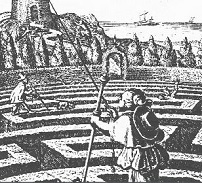
Abstract: MUSE 28
„Locating the soul“
In the exhibition „Locating the soul“ which is shown in the Wuerttemberg Museum of Psychiatry in Zwiefalten, 18 museum initiatives for public debate and communication of psychiatry in a historical and social context are presented. The museums of psychiatry from Germany, Austria and Switzerland participate. Based on texts and photographs – usually, if desired, using the example of a selected exhibit – they deal with clinical pictures, treatment methods and diagnostics as well as special personalities and historical epochs. The social conditions under which the regionally different psychiatric institutions developed are just as important as the respective architectures in which psychiatry takes place. The exhibition were initially organised by the MuSeele (Christophsbad Göppingen) and the Wuerttemberg Museum of Psychiatry. The exhibition was shown for the first time during the annual congress of the DGPPN 2018 in Berlin and also enriched the program with the associated symposium, headed by Rolf Brüggemann und Thomas Müller.
Responsible for the exhibition: Dipl.-Psych. Rolf Brüggemann and Prof. Dr. Thomas Müller.
Exhibition period: October 10, 2019 – February 28, 2020.
Opening event: October 23, 2019 at 5 pm.
Abstract: MUSE 27
„An encounter with Gustav Mesmer. Photos by Nicole Becker“
This photo exhibition of the Wuerttemberg Museum of Pychiatry at three locations of the Centre for Psychiatry Wuerttemberg shows previously unpublished photographs of Gustav Mesmer taken by Nicole Becker in 1988. She visited Mesmer in an old people´s home where Mesmer spent the last years of his creative life in order to portray an “extraordinary person”. The exhibition is curated by the psychiatrist Dr. Wolfram Voigtländer (Berlin/Heidenheim), a former director of the psychiatric department at the district hospital of Heidenheim. Voigtländer curated this exhibition in cooperation with Nicole Becker. Curatings for the Wuerttemberg Museum of Psychiatry were Thomas Müller and Bernd Reichelt. This photo exhibition has been shown at three locations of the Centre for Psychiatry Suedwuerttemberg in Ravensburg-Weissenau, Bad Schussenried and Zwiefalten.
Exhibition period: Ravensburg-Weissenau: June 28 – August 31, 2018 / Bad Schussenried: September 6 - November 4, 2018 / Zwiefalten: February 14 - May 17, 2019.

Abstract: ZWIE 6
The “Benevolent society for mentally ill and emotionally disturbed persons in Baden-Wuerttemberg” (der “Hilfsverein für Nerven- und Gemütskranke in Baden-Württemberg”). Civic engagement and social re-integration of the mentally ill in a historical perspective
In addition to the institution’s internal sources, this approach would especially rely on historical sources beyond the “walls of the asylum” (Bartlett and Wright). This method makes it possible to involve family networks as well as connections between relatives of the psychiatric ill, which are suitable to research the work of the benevolent societies using the example of South Wuerttemberg. Contemporary journalistic articles and literary sources complete the existing and comprehensive sample of primary sources. The research interest focuses on the “external” view of the medical laymen concerning the asylum. The assignee of the “Benevolent Society”, the “Benevolent Society of Baden-Wuerttemberg for Mental Health” (der “Baden-Württembergische Hilfsverein für seelische Gesundheit”) is connected with our institution.
Project: Akademic qualification work. Author: Sylvia Luigart. Supervision: Prof. Dr. Thomas Müller, Prof. Dr. Gerhard Längle.
Planned processing period: 2010-2016.
Abstract: WEIS 11
Cooperation with the State Archives of Baden-Wuerttemberg (2017-2022) ("Sheltered Home Education Project" (2012-2018) and "Documentation Project on Forced Placement" [2019-2022]).
Since 2006, the discussion about traumatising experiences of institutionalised children after 1945 has been politically addressed in the German public, including in the German Parliament and the state parliament of Baden-Wuerttemberg. As a result, three projects have since been developed in the State Archives of Baden-Wuerttemberg. One of them - "Project Sheltered Home Education", funded by the Baden-Wuerttemberg Ministry of Social Affairs - was dedicated to the historical reappraisal of sheltered home education between 1949 and 1975 in Baden-Wuerttemberg from 2012 to 2018 and included extensive archival research. In cooperation with the Contact and Counselling Centre set up at the Municipal Association for Youth and Social Affairs, more than 1,800 enquiries from former affected institutionalised children were processed.
The long-standing cooperation of the Research Unit for the History and Ethics of Medicine at the Centre for Psychiatry Südwürttemberg / Clinic for Psychiatry and Psychotherapy I of the University of Ulm with the State Archives of Baden-Wuerttemberg on this topic took place on several levels.
From 10 August to 18 October 2017, the travelling exhibition "Neglected and endangered? Sheltered Home Education in Baden-Württemberg 1949-1975" conceived by the State Archives of Baden-Wuerttemberg together with the advisory board of the Contact and Counselling Centre for Sheltered Home Education, was shown at the location of the Centre for Psychiatry Südwürttemberg in Ravensburg-Weissenau (the exhibition was presented by the Wuerttemberg Museum of Psychiatry at the Centre for Psychiatry Südwürttemberg; cooperation partner was the Institute for Social Professions Ravensburg). Central aspects of the exhibition were the system of sheltered home education, the role of the youth welfare offices in the process of institutionalisation and the lifeworlds of the institutions themselves. In addition, the exhibition provided insights into the everyday life of many children's sheltered homes in the Federal Republic of Germany between 1949 and 1975, as well as into the emotional worlds of their residents, the former, so-called institutionalised children.
In October 2018 and March 2020, historians Nastasja Pilz and Nora Wohlfarth, who worked on the project, reported at the first and second historical conferences on "Historical knowledge and the educational mission using the example of National Socialism" (organised by the Research Unit at the Centre for Psychiatry Südwürttemberg-Weissenau, among others) on how structural, personnel and pedagogical continuities enabled the "spirit" of National Socialism to survive in segregated areas of child and youth welfare over three decades. In addition, steps were presented at the conferences that could lead to the establishment of topic-related archival competence or advisory centres. Furthermore, the approach of introducing "deadline archives" was presented in order to be allowed to keep personal records for a longer period of time - a hitherto little-noticed function of the archive as an institution that also safeguards democracy.
In 2019, the follow-up project "Documentation Project on Forced Accommodation", which is scheduled to run until April 2022, began. During this period, the State Archives Baden-Wuerttemberg researched people who were placed in sheltered homes for the disabled and in psychiatric institutions during their childhood between 1949 and 1975. Many of them had painful and traumatising experiences there. The project team supported almost 190 affected persons who were looking for evidence or files about their placement. In close cooperation with the contact point of the Foundation for Recognition and Assistance, the project has advanced the regional reappraisal and made the knowledge gained available to the public. Since some of those affected were temporarily (forcibly) housed in the Weissenau Regional Psychiatric Hospital, among other places, the team of the Research Unit also received enquiries from former patients until 2022 and helped them with research and file/document searches.
Responsible for the cooperation at the Centre for Psychiatry Südwürttemberg-Weissenau: Prof. Dr. Thomas Müller, Dr. Bernd Reichelt, Dr. Uta Kanis-Seyfried
Abstract: ZWIE 1
The physician-patient-relationship in the mirror of the documentation. What do the medical reports of 200 years show about the relationship between asylum patients and their physicians?
This project deals with the relationship between physician and patient reflected in the documentation. The basis of this research is a random sample of 10 patients per decade, starting from the opening of 1812 to 1982. In addition to background variables such as the ratio of treating physicians to treating patients, hospital stay etc., the way of the documentation, the choice of words, the emotional involvement, the degree of familiarity etc. are recorded. Besides the course documentation there are also statements written to external cooperation partners (family doctors, departments etc.).
Project: Academic qualification work. Author: Helena Pfleiderer. Supervisors: Prof. Dr. Gerhard Längle, Prof. Dr. Thomas Müller.
Current status: Project currently on hold.
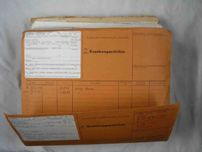
Abstract: ZWIE 2
The treatment of addicts in an asylum from 1812 to today
This project deals with the development of the admissions with addiction diagnoses. First outbreak, development according to frequency, length of hospital stay, co-morbidity, socio-demographic variables and the type of the treatment are each analysed regarding the valid diagnosis ratio over time. The respective basic understanding of addictions will be here also analysed. 150 selected patient files of alcohol-addicted patients of the Münsterklinik Zwiefalten from 1812 to 1982 serve as a database.
Project: Academic qualification work. Author: Iris Klömpken. Supervisors: Prof. Dr. Gerhard Längle and Prof. Dr. Thomas Müller.
Current status: Project currently on hold.
Abstract: COST (EU-ANTRAG)
The Institutions of European Psychiatry. The memory of archives as a contribution to a political and social stock-taking
European program “Intergovernmental framework for European Co-operation in the field of Scientific and Technical Research”
Responsible for the project: Riccardo Panattoni, Professor for Philosophy, University of Verona/Italy
Co-organizer: Documentation Centre of History of Psychiatry “San Lazzaro” in Reggio Emilia/Italy
Scientific coordinator: Dr. Judith Kasper, Centro di Documentazione sulla Storia della Psichiatria, Reggio Emilia, Tel.: 0039 041 2960 800
Responsible institution: Department of Philosophy — University of Verona/Italy
General objectives of the project:
To create a network between European researchers to realize innovative and interdisciplinary research in the field between psychiatry and society with regard to a comprehensive survey of political practices concerning mental health.
Specific objectives:
The project aims at the creation of a solid network on whose base the constitution of a European Scientific Committee on Mental Health will be realized later.
Description of the project:
The project intends an exploration of psychiatry under the following aspects: historical, philosophical, ethical, legal, social, cultural, sanitary etc. Based on the analysis of the state of the arts in the specific domains of research realized by the partners, the project aims to an interdisciplinary and international dialogue and research on questions regarding the political practices concerning mental health which, in general, are not treated in an interdisciplinary way and only on a national range. The large and solid network of common exchange and research which will be constituted during the 4 years (term of the project) will be the basis for the constitution of a European Scientific Committee on Mental Health able to function as an efficient subject of consultation on a European level. The way and the means applied for the realization of the project are regular meetings (one or two times per year) during the 4 years. The function of these meetings is to do a stock-taking of the research done by the singular partners, to permit an interdisciplinary dialogue and exchange and to fix the future direction of research. The project contributes to the construction of a memory of mental and psychic disease as well as of a memory of the psychiatric institutions which care for and last but not least elaborate effective forms of communication and documentation of the various aspects of relations between psychiatry and society.
Projekt nach Vorauswahl im weiteren Verfahren zweimalig abgelehnt
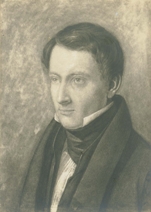
Abstract: MUSE 1
This temporary exhibition has been the 7th temporary exhibition of the Wuerttemberg Museum of Psychiatry since its foundation in 2003, and the first one since the establishment of the Research Unit for History and Ethics of Medicine at the Centre for Psychiatry Weissenau or since the establishment of the coordination of the Historical Research at the Centres for Psychiatry in Baden-Wuerttemberg. For this reason, it operates here under the short name MUSE 1. The exhibition was first presented during the conference “Transfer of Knowledge in Psychiatry. Albert Zeller and the Psychiatry of Baden and Wuerttemberg in the 19th century” on 13/14 June 2007 at the Centre of Psychiatry Winnenden before it was seen in the Wuerttemberg Museum of Psychiatry. The exhibition was accompanied by the book publication of the historical travel diary written by Albert Zeller in 1832/33. This diary was reason to deal with the early days of the Wuerttemberg Psychiatry. After the foundation of the first “Königlich-Württembergischen Staatsirrenanstalt” in Zwiefalten, a second asylum was opened – according to modern approaches – in the former Deutschordensschloss Winnenthal in Winnenden near Stuttgart. Before starting work, the director Albert Zeller was obligated to visit the most advanced European asylums and to report about it to the Interior Ministry. Zeller´s travel report was presented in 22 keywords from A to Z and supplemented by extensive objects from estate and national collections.
1) Book publication. Author: Bodo Rüdenburg. 2) Temporary exhibition. Author: Martin Rexer in cooperation with Priv.-Doz. Dr. Thomas Müller, Bodo Rüdenburg. 3) Conference organisation: Priv.-Doz. Dr. Thomas Müller.
Exhibition period: 01.07.2007—24.01.2008
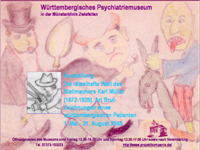
Abstract: MUSE 2
The enigmatic world of the wheelwright Karl Müller (1872-1925). “Art Brut”- Drawings made by a Wuerttemberg patient (Collection MuSeele)
The collection previously showed only in the Schleswig Museum of Outsider Art and in the City Museum Welzheim was presented within the specified period in the Wuerttemberg Museum of Psychiatry. The exhibition was a cooperation with the Museum of History of Psychiatry & Psychiatric Stories “MuSeele” in Göppingen. The exhibition includes more than 100 coloured pen and ink drawings of high artistic quality made by the former patient and wheelwright Karl Müller, born 1872 in Aichstrut near Welzheim. These drawings, his patient file and a report of his treating physician Dr. Eugen Schmidt are almost the only surviving documents of this Winnenthal psychiatric patient. The drawings are an impressive proof for the fantasies, longings and fears of this man.
Project: Temporary exhibition. Author: Bodo Rüdenburg, Priv.-Doz. Dr. Thomas Müller, Ingrid Dümmel.
Exhibition period: 01.05.-31.08.2008
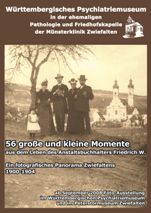
Abstract: MUSE 3
„56 great and small moments from the life of the asylum bookkeeper Friedrich W. A photographic panorama of Zwiefalten (1900-1904)“
The collection presented over the turn of the year 2008 / 2009 includes over 50 unique historical photos of Zwiefalten transferred to the Wuerttemberg Museum of Psychiatry on the occasion of its opening in 2003. In cooperation with the Peterstor-Museum Zwiefalten, these photos were presented to the public for the first time from 1 September 2008 to April 2009. In the period from 1900 to 1908, the bookkeeper Friedrich W. explored his residence Zwiefalten and its surroundings. The photos present impressive evidence of the development history of the asylum embedding in the history of the small community. These documents permit conclusions concerning historical questions about architecture, asylum structure and social live in Zwiefalten.
Project: Temporary exhibition. Author: Martin Rexer, assisted by Bodo Rüdenburg and Priv.-Doz. Dr. Thomas Müller.
Exhibition´s duration: 01.09.2008 - 30.04.2009
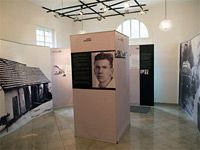
Abstract: MUSE 4
Coercive sterilisation, so-called “euthanasia” and murder of patients in German psychiatry
The temporary exhibition of the museum planned for May 2009 for a period of approx. 3 months is a loan of our cooperation partner “Gedenkstätte Grafeneck” (“Grafeneck Memorial”). Since 2003, the Grafeneck Memorial has a travelling exhibition as a new and, in this dimension, unique medium for a memorial in Baden-Wuerttemberg. The temporary exhibition was initiated by the memorial support of the Federal Republic of Germany as well as the state Baden-Wuerttemberg and was initially titled “Murder of Patients in National Socialism – Grafeneck in 1940. “Euthanasia”-Crimes in Southwest Germany”. To make the subject “Euthanasia” in National Socialism open to a wide audience, the exhibition was planned as a temporary one. There is a number of research projects initiated within the framework of the “Historical Research” in South Wuerttemberg, which will produce results in the foreseeable future. The “Historical Research” cooperates with the Grafeneck Memorial in the presentation of these results even beyond the medical-historical professional public.
Project: Temporary exhibition. Author: Priv.-Doz. Dr. Thomas Müller in collaboration with Bodo Rüdenburg and Martin Rexer. Cooperation partner: Dr. Thomas Stoeckle, Grafeneck Memorial.
Exhibition period: 01.05.-31.07.2009
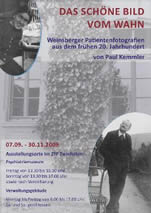
Abstract: MUSE 5
The beautiful picture of insanity. Weinsberg patient photos from the early 20th century
The exhibition presents historical photographs from the Wuerttemberg asylum of Weinsberg. Within the framework of his activity, the first medical director, Dr. Paul Kemmler (1865-1929) had created, between 1904 and 1918, a fund of about 1000 photos, including individual and group portraits as well as documentations of buildings and parks of the asylum. The major part of Kemmler’s oeuvre, including more than 700 glass plates, consists in pictures taken of his patients as well as of the asylum’s staff. A further part of the photos demonstrates the therapeutic situation at the asylum, from sunbathing, spinning, sawing to field work and further activities of the patients. Kemmler’s photographs are marked by a high technical and aesthetic quality, which could be achieved, last but not least, due to the interest of the physician in the medium of the photography. On the one hand, the portraits, especially those of the so-called “Pfleglinge”, suggest the circumspection and accuracy of the psychiatrist at the moment of taking pictures. On the other hand, particularly the portraits of the female patients raise complex ethical questions. Now and then, the partial high-quality photographs remind of the social portraits of August Sander. In summer 2005, this unique collection was transferred from the “Klinikum am Weissenhof” at Weinsberg to the State Archives Ludwigsburg, which presented it in summer 2009, for the first time, as an exhibition within the framework of an extended context of civic photography after 1900. The Wuerttemberg Museum of Psychiatry has adopted this concept and shows the full collection in the premises of the museum and the administration building of the Centre for Psychiatry Suedwuerttemberg at Zwiefalten.
Exhibition period: 07.09.2009 – 15.02.2010 in the Wuerttemberg Museum of Psychiatry and in the administration building of the Centre for Psychiatry Suedwuerttemberg in Zwiefalten.
Project: Temporary exhibition. Lender: State Archives Ludwigsburg. Authors: Priv.-Doz. Dr. Thomas Müller, Bodo Rüdenburg.

Abstract: MUSE 6
Narrated history of psychiatry. Patients from Münsterlingen/Thurgau in the „Hör-Bar“
The reconstruction of the psychiatric clinic Münsterlingen in 1985 brought not only reformations regarding the placement of the mentally ill in the Swiss canton Thurgau, but also transformations on the treatment of the patients in the oldest Swiss psychiatry. In particular long-term patients remember the life in the old clinic. 75 years of age and older are men and women in the „Hör-Bar “, who tell about their experiences in and with the psychiatry. Five objects – a heart of a cardboard box, a chain, a sandglass, a candle and the picture of a wasteland – given to the interviewed persons as keywords, became symbols of various memories. In accordance with the objects, hospital everyday life and personal experiences are described and reflected at five different listening stations – completely as it corresponds to the respective storyteller. The different Swiss-German homeland dialect of the highly aged patients characterizes theirs narrations. The project was inspired by Tobias Arni, clinic pastor in Münsterlingen, and Christine Froetscher, scientific employee of the clinic's direction of nursing.
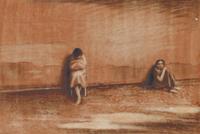
Abstract: MUSE 7
„The 232th month“ by Jan-Peter Tripp. An art exhibition originated in the Psychiatric State Hospital Weissenau in 1973
The exhibition was presented in the premises of the Wuerttemberg Museum of Psychiatry between early March and mid-May 2011 and showed 32 objects in a series as well as some other works that originated during a study visit of Tripp from 16 January till 16 February 1973 in the former Psychiatric State Hospital Weissenau. Jan-Peter Tripp is a graduate of known art academies in Vienna and Stuttgart and was a fellow of well-known promoters. This series of work was a kind of early breakthrough for the artist born in 1945 in Oberstdorf / Allgäu. It was followed by a barely manageable number of exhibitions of Tripp´s work in many European cities and countries outside Europe.
The series is a number of rectangular, flat objects of the size of about 60 x 40 cm, which were edited in 2008 and include photographic, handwritten and diary-like records on psychiatry. Moreover, the series contains smallest photos in the frieze as well as often personal paintings of the artist. The objects are closely related to Weissenau as a former Psychiatric State Hospital, today the location of the Centre for Psychiatry Südwürttemberg. The texts describe a psychiatric hospital before implementation of the reform measures of the so-called Psychiatrie-Enquête. The personal descriptions of the patients act genuine; they are partially anonymized und act anyway realistic. Some stations and departments, including the hospital area are described identifiably. In relation to that time, the attitude of the observer / artist is certainly “critical of psychiatry”. In part, newspaper cuttings and letter pieces were installed. Not only on the basis of the photos and portrait paintings, the patients are in the centre of this interesting exhibition.
Provided by Hugo Näger (Gallery Hagen, Offenburg), the gallery owner and curating companion of the works of Jan-Peter Tripps.
Duration: from 1 March till 15 May 2011
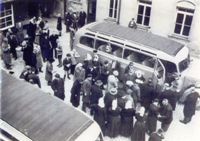
Abstract: MUSE 10
On the history of south-western German „euthanasia“ with particular regard to the role of Grafeneck and Zwiefalten
The travelling exhibition of the Museum of Zwiefalten, which was presented at the administration building of the clinic in Zwiefalten, is a renewed cooperation with the Memorial Site Grafeneck. The theme of the temporary exhibition of the museum, which was already shown from May to July 2009 and dedicated to the so-called euthanasia in the southwest of Germany, gained a renewed importance in 2012. The given temporary exhibition is a loan of our cooperation partner “Memorial Site Grafeneck”. At that time there were almost no memorials in Baden-Wuerttemberg, which had a temporary exhibition in such a dimension. The travelling exhibition of the Memorial Site Grafeneck was initiated by the Federal Government and the Federal State of Baden-Wuerttemberg in the framework of the sponsorship on memorials and was initially known as “Murder of the Sick during the National Socialist Period – Grafeneck 1940. Euthanasia crimes in the southwest of Germany”. On the occasion of the 200th anniversary of the Zwiefalten psychiatric clinic, this exhibition integrates new research results on the projects of the research area “History of Medicine” at the Centre for Psychiatry Suedwuerttemberg. The current additions of the Centre for Psychiatry Suedwuerttemberg to the travelling exhibition focus on the special function of Zwiefalten in the framework of “euthanasia”, some biographical studies on physicians involved, insights into biographies of the patients from Zwiefalten and other aspects. On the occasion of the transfer of the Ravensburg Memorial for the victims of the “euthanasia” (“Monument of the Grey Buses”), the exhibition was handed over to the public in Zwiefalten on 19 April 2012 and was demonstrated in Zwiefalten till December 2012.
Authors of the exhibition:
Thomas Stöckle, Franka Rößner (Documentation Centre / Memorial Site Grafeneck), Thomas Müller, Uta Kanis-Seyfried (Centre for Psychiatry Suedwuerttemberg).
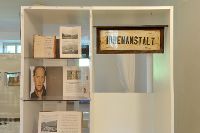
Abstract: MUSE 11
„I don’t want to be fooled anymore“
“I don’t want to be fooled anymore”, complains hunting assistant Josef B. in 1903 about his treatment and incarceration in psychiatry. In the framework of this remarkable exhibition there is a reconstruction of Josef B.´s biography as well as an insight into biographies of 30 further women and men treated psychiatrically from the beginning of the 19th century to the 1970s in the historic area of Tyrol. This exhibition of the Wuerttemberg Museum of Psychiatry takes place in the administration building of the Centre for Psychiatry Suedwuerttemberg at Zwiefalten from 1 May till 30 September 2012. The impressive exhibition has been officially opened on the evening of 13 June 2012 in the presence of the Austrian-Italian exhibition team. The exhibition works with pieces of furniture and arranges aesthetically biographical “case histories”. The exhibition is a partial result of an EU project and is dedicated to the biographies of patients treated with psychiatric measures in the historical area of Tyrol, among others in the asylums Hall in Tyrol, at the University Hospital of Innsbruck and in the asylum Pergine, Italy. The biographies are mostly accompanied by passive verbs which should characterise the fate of the patients: to examine – to work – to eat – to treat – to keep – to murder – to educate – to transfer. In the framework of the German-Italian Option Treatment between Hitler and Mussolini in the 1940s, many patients from today´s South Tyrol were “transferred” to Wuerttemberg – to the asylums Zwiefalten, Schussenried and Weissenau. These and other aspects show interesting and partly unexpected connections between Tyrol´s history of psychiatry in the 19th and 20th centuries and Wuerttemberg´s history of psychiatry, which covers 200 years now. The biography of a female patient had an opposite way in comparison to the so-called “South Tyrolean” in Wuerttemberg. Being born in Zwiefalten, she had lived in South Tyrol and became ill there some time later.
Management team of the project: Maria Heidegger, Siglinde Clementi, Elisabeth Dietrich-Daum, Hermann Kuprian and Michaela Raiser.
Curating and scenography: Lisa Noggler and Celia Di Pauli.
Responsible for the installation at the Wuerttemberg Museum of Psychiatry in Zwiefalten: Thomas Müller.
Duration of the exhibition: from 23 April to 30 November 2012.
Opening event: on 13 June 2012, at 20.30 p.m.
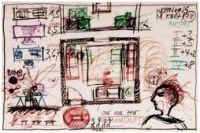
Abstract: MUSE 12
Seen from this perspective. Art and experience in psychiatry
„Seen from this perspective“. 60 artists experienced in psychiatric illness from Baden-Wuerttemberg. In 2012, an art competition under the motto “Seen from this perspective” has been announced for the second time. 300 artists experienced in psychiatric illness applied for this award. On the whole there were 880 pieces of art which had to be judged by a jury. 60 of these pieces of art were shown in the Wuerttemberg Museum of Psychiatry from April until the end of June 2013 after earlier exhibitions in Stuttgart, Konstanz, Nürtingen, Göppingen and Karlsruhe. Further information on the art award and the exhibition please see: http://www.landespsychiatrietag.de/kunst_preis.html . The pictures are partly commercially available.
Responsible for the exhibition at the Württemberg Museum of Psychiatry: Dr. Thomas Müller.
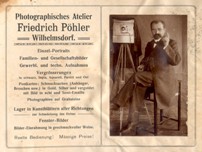
Abstract: MUSE 13
Traveler between the worlds. Friedrich Pöhler (1867-1921) — patient and photographer
Friedrich Pöhler was one of the first photographers who was professionally involved in the production of portrait photographs and everyday photography in the southwest of Wuerttemberg. A large number of remarkable photographs was created for example during his professional activity from 1909 to 1911 in Wilhelmsdorf. These pictures reflected impressively the rural and civic life in Upper Swabia at the beginning of the 20th century. Since the early adulthood Pöhler had suffered from a mental illness and had balanced on the thin line between the normality of the everyday world and numerous stays in the psychiatric asylums and hospitals.
The exhibition is situated in the administration building of the Centre for Psychiatry Südwürttemberg at Zwiefalten and took place from March to June 2014. The exposition showed Pöhler´s photographic work and also provides for the first time an insight into the biography of this man, his struggle for a self-determined life as well as the pressure resulted from his illness and (petit) bourgeois conventions. At the same time the exhibition allows to take an authentic look at the contemporary medicine at the turn of the 20th century and the handling of physicians with their patients. This exhibition is curated in a mobile version, too and can be displayed in various occasions. Please get in touch with us for further information.
Editing and curation by Dr. Uta Kanis-Seyfried.
Processing period: from 2013 till 2014. Exhibition period: from March to June 2014.
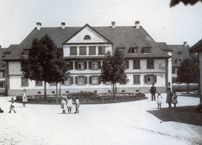
Abstract: MUSE 14
„100 years of psychiatry at Reichenau near Constance“
This exhibition was presented in the spring of 2014 at the Centre for Psychiatry Südwürttemberg at the Ravensburg-Weissenau location und dealt with the changing history of psychiatric care in Reichenau (Baden) near Constance. At the occasion of the 100th anniversary of Baden´s Grand-Ducal asylum, the exhibition in 2013 under the direction of Winfried Klimm (Centre for Psychiatry Reichenau) had been compiled with numerous photographs and further material. In the years of the Weimar Republic, the treatment of the mentally ill was initially influenced by the social-psychiatric and psychotherapeutic approaches. In comparison with other psychiatric facilities, there was a particularly harsh caesura during the period of National Socialism. It was not only that 508 persons were deported and murdered within the framework of the so-called euthanasia. In 1941, Baden´s Grand-Ducal asylum Reichenau completely ceased its activities. The premises were provided for the National Educational Institution (NAPOLA). In the decades after the war, the function of a psychiatric hospital was re-established. A so far unique model cooperation between the psychological faculty of the newly founded University of Constance and a psychiatric state hospital with service mission arose under the leadership of Helmut Siedow and Rudolf Cohen. Professional studies and specialisations, especially in the field of addiction medicine and psychosis, dominated the next decades of research and care. Curated by Thomas Müller and Uta Kanis-Seyfried (Research Unit for the History and Ethics of Medicine at the Centre for Psychiatry Südwürttemberg), the exhibition on the history of (psychiatry in) Reichenau stretches from the beginnings of the treatment of the mentally ill to various forms of care and examples of today´s modern therapies and forms of sheltered home.
Editor and curator: Winfried Klimm. Curators at Weissenau: Prof. Dr Thomas Müller, Dr Uta Kanis-Seyfried.
Exhibition period: from 1 April to 21 July 2014.
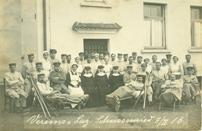
Abstract: MUSE 15
“On shell shock patients, medical officers and helpers. Trauma and psychiatry in the First World War”
In 2014 is the 100th anniversary of the beginning of the First World War in 1914, which was the first industrialized mass war in history. Under the conditions of this trench warfare, several hundred thousand soldiers alone in the German army got sick with so-called mental diseases. But some of the people who stayed at home suffered also from a variety of mental injuries of the “big war”. Psychiatric hospitals at the war front and “home front” were confronted with unexpected problems regarding placement and treatment of the patients. Military personnel with mental diseases were treated in special military hospitals. In the walls of these institutions the physicians applied new, partially radical treatment methods developed in the public military-psychiatric discourse.
The exhibition conceived by Dr. Maria Hermes (Bremen) in the framework of her thesis and presented in the premises of the administration building of the Centre of Psychiatry Südwürttemberg at Zwiefalten deals with psychiatry in the German Reich using the example of the St. Jürgen's asylum in Bremen. On the basis of medical histories of not only military, but also civilian male and female patients there are presented different subject areas: physicians – nursing staff – causes of war – traumata and its evaluation – treatment methods – diseases in the war – starvation. The facts of this exhibition are illustrated by photographs, documents and material exhibits. At two hearing stations there are quotations from physicians and patients on psychiatry in the First World War spoken by actors: so, this way it is possible to experience authentically the perception of people concerned.
The exhibition was extended by own researches on regional history during the First World War at the Research Unit for the History and Ethics of Medicine at the Centre of Psychiatry Südwürttemberg and was compiled by Dr. Uta Kanis-Seyfried. Using the example of the Wuerttemberg asylums Zwiefalten, Schussenried, Weissenau and the Baden Reichenau near Constance, different aspects and consequences of the war are pointed out. Exemplary examples of “patient stories” from the military reserve hospital, which had been established in the asylum Weissenau, can be found in a brochure.
The exhibition (Centre of Psychiatry Südwürttemberg, Zwiefalten, Hauptstraße 9, administration building) is open to 31 March 2015: Monday to Sunday from 10 a.m. to 18 p.m. The entrance is free. Guidances are at any time possible after advance reservation at the Wuerttemberg Museum of Psychiatry Zwiefalten. Tel.: 07373 / 10-3113. Author and curator: Dr. Maria Hermes. Curating in Zwiefalten: Dr. Uta Kanis-Seyfried
Exhibition duration: from 1 October 2014 to 31 March 2015. Centre of Psychiatry Südwürttemberg at Zwiefalten, administration building.
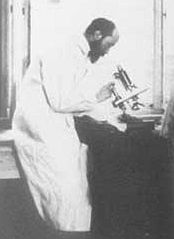
Abstract: Muse 16/SCHU 5
„Korbinian Brodmann's brain research“
With the study and representation of the comparative localization teachings of the cerebral cortex at the beginning of the 20th century, the neurologist and psychiatrist Professor Dr. Korbinian Brodmann left to the medical posterity innovative scientific realizations. The Korbinian-Brodmann-Museum was established in 1986 at Brodmann's birthplace Liggersdorf near Stockach und is dedicated to the researcher and his work. In 2012 in cooperation with the Museum in Hohenfels-Liggersdorf, Dr. Uta Kanis-Seyfried (Research Unit for the History and Ethics of Medicine at the Centre for Psychiatry Südwürttemberg) compiled a traveling exhibition, which makes public the substantial contents of this exhibition in the region and beyond it. On this basis, for the first time outside of the museum, it became possible to gain an insight into Brodmann's life and work. After two years of the lending, the exhibition was brought back and extended thematically considerably. From March to July 2014, the exhibition was presented firstly in extended form in the premises of the akademie südwest of the Centre of Psychiatry Südwürttemberg at Bad Schussenried.
Native authors: Museum Hohenfels-Liggersdorf / Dr. Uta Kanis-Seyfried.
Extended adaptation and curating of the travelling exhibition: Dr. Uta Kanis-Seyfried.
Place of issue: University of Würzburg, Medical Faculty, 2015.
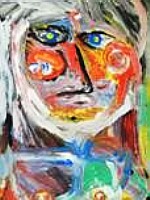
Abstract: Muse 17
Interpretation of the „Spanish Girl“. An inclusive art project.
The exhibition shows 22 results of an art exhibition based on an anonymised competition procedure in 2014 which was attended by persons with psychiatric experience as well as school pupils from the south of Baden-Wuerttemberg. The works of art thwart impressively the stereotypical prejudice of the distinguishability of the art that has been made by persons with or without psychiatric disorder. The initiative is the product of a cooperation of the Kunstmuseum Ravensburg (Art Museum Ravensburg) with the Centre for Psychiatry Suedwuerttemberg in Ravensburg. For the purposes of the social-psychiatric debate, the works of this inclusive drawing competition represent each individual adaptations and alienations of the work “Spanish Girl” of Alexej von Jawlensky from the collection of the Kunstmuseum Ravensburg. The Wuerttemberg Museum of Psychiatry shows the selection of works in the premises of a clinic internal academy for training and continuing education to make them available for a broader audience. In the drafting phase, the initiators could fill people of the region with and without chronic psychiatric disorders with enthusiasm for common artistic work. A second lasting effect of this art competition is the social networking of the participants, who visit museums and exhibitions in the meantime together and work on many other projects. An inclusive art group established itself initially with its own studio at the Ravensburg Scholl of Design.
Organisers of the competition with the exhibition: Kunstmuseum Ravensburg and Centre for Psychiatry Suedwuerttemberg
Curators: Dr. Michael Konrad (Head of Department Sheltered Home of the Centre for Psychiatry Suedwuerttemberg in Ravensburg), Dr. Nicole Fritz (Head of Kunstmuseum Ravensburg).
In charge of the Museum of Psychiatry: Priv.-Doz. Dr. Thomas Müller
Host institution: akademie südwest of the Centre for Psychiatry Suedwuerttemberg.
Site: akademie südwest, New Cloister, Bad Schussenried, Wuerttemberg.
Opening event: Wednesday 10 December 2014 at 15.00.
Exhibition period: 10 December 2014 to 15 February 2015 .
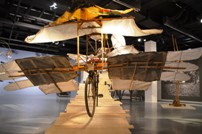
Abstract: MUSE 18 / WEIS 9
The exhibition „Flying with the bicycle“was dedicated to the life of the former monastery school pupil and fly-wheel manufacturer Gustav Mesmer (1903-1994). Owing to peculiar occurrences in 1929, Mesmer was admitted to the State Asylum Schussenried for the first time. In total, he spent approximately 35 years of his long life as a patient of the psychiatric clinics in Schussenried and Ravensburg-Weissenau. Almost all his life, Mesmer produced drawings, paintings, built and invented instruments. During his lifetime he became famous above all with his fly-wheels models. The art works of the Upper Swabian “Icarus of the Lautertal” were incorporated in the program of the World Exhibition in Seville in 1992. The exhibition of Zeppelin-Museum in Friedrichshafen ran from 27 March to 28 June 2015 and represented the whole surviving work from various stages of his life. The exhibition was supported by exhibits of the Wuerttemberg Museum of Psychiatry, refers to the documents of the Centre for Psychiatry Suedwuerttemberg and was advised on content-related issues by the Research Unit for the History of Medicine at the Centre for Psychiatry Suedwuerttemberg.
Project Manager: Sabine Mücke, M.A., Zeppelin-Museum Friedrichshafen.
Supervisors from the Wuerttemberg Museum of Psychiatry / the Research Unit for the History of Medicine: PD Dr. Thomas Müller, Dr. Uta Kanis-Seyfried.
Exhibition period: from 27 March to 28 June 2015. Opening event: 27 March 2015.
Abstract: WEIS 5
„Crimes against criminals are still crimes“. Ethical and medical-historical aspects of the forensic facility using the example of the patients enclosed in the so-called action “T4” (AT)
In historical perspective, patients being treated today in the Forensic Psychiatry represented a separate stigmatised group among the victims of the NS “Euthanasia” or the murder called “T4”. There is a difference to be noticed between the terms “Justizvollzug” (Strafvollzug) and the “forensic facility” (“Maßregelvollzug”) using since 1933. Since the publication of the work by Nikolaus Wachmann (German version, 2006), the theory on Justizvollzug / Strafvollzug is doubted rightly: it was supposed, that in contrast to the concentration camps, there were “law and order” in the prisons of the Third Reich, and the inmates were rightly incarcerated there. Sometimes the situation in the prisons was a very different one (“crimes against criminals are still crimes”). This Weissenau research project cooperates with the Hanse-Klinikum in Stralsund and shows an interregional comparison on the research of the ethical issues and the historical facts in the “forensic facility”. As the field of the Justizvollzug (Strafvollzug) is now researched, the “forensic facility” or the persons concerned are still an ignored group of victims during National Socialism. Furthermore, the project deals with implications of the current research results for today’s Forensic psychiatry. The German law enforcement authority after 1933 set a good example, how quickly the legal authorities not only came to an arrangement with the new rulers, but increasingly practised in anticipation of Hitler´s will and consequently worked on the dissolution of the legal standard structures. This project shows to what extent medical actors and health professionals had initiated structure-forming legal and care “measures”. Moreover, the interregional research focuses on the fate of those patients who were not directly asked for violent readiness in the prehistory within the “leaflet” of the “notification sheet T4”, but were treated, however, as so-called “criminal mentally ill”.
Cooperation partners: Dr. Dr. Michael Gillner / Dr. Frank Orlob / Dr. Jan Armbruster (Stralsund, Mecklenburg-Vorpommern); Dr. Michael von der Haar (Bad Rehburg, Niedersachsen). Supervision: Dr. Udo Frank, PD Dr. Thomas Müller (Centre for Psychiatry Suedwuerttemberg / Clinic of Psychiatry and Psychotherapy I of the University of Ulm); Currently, the treatment of the subject is exposed.
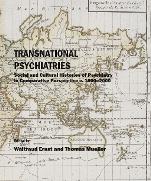
Abstract: EUROPA 2
Transnational Psychiatries. Social and cultural histories of psychiatry in comparative perspective, c. 1800—2000
This collection will be of particular interest to scholars in the history of psychiatry, psychoanalysis and psychotherapy and the sociology of health and illness. Because of its interdisciplinary approach and international vantage point, it will also appeal to colleagues in disciplines such as history of medicine widely conceived, medical anthropology, social geography, and social policy – in Britain, Continental Europe as well as in the United States and Australasia. Currently there is no such wide-ranging yet thematically and methodologically focused volume in the field.
The book focuses on psychiatry and mental health and illness in relation to 13 countries (Australia, New Zealand, Fiji and the Pacific, India, Germany, Austria, Switzerland, Belgium, France, England, Serbia, the United States of America, Japan). It provides an extensive assessment of the development of psychiatry, psychoanalysis and psychotherapy on four continents, covering themes that range from psychiatry’s colonial world to issues of knowledge transfer between competing European nation states; professional competition over new therapeutics; the impact of political events and warfare on psychiatric textbooks; the diversification of psychotherapeutic practices and re-emerging forms of patient care; anti-psychiatry’s impact on scientific debates; and the forced and planned starvation of psychiatric patients under war time conditions. Each of these themes will be approached from an inherently comparative and transnational perspective, which means that no mere lip service is paid to a comparative methodology by simply collating a selection of chapters on diverse countries in one volume under the label ‘comparative’. The comparative element is an integral part of each single chapter, rather than leaving it up to the reader to compare particular issues highlighted in different chapters.
Project: Research project for free publication. Cooperation partners: Prof. Dr. phil. Waltraud Ernst Department of History, School of Arts and Humanities, Oxford Brookes University, Oxford/England, Priv.-Doz. Dr. Thomas Müller. Publication: October 2010.
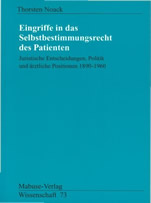
Abstract: BERL 2
Intervention in the self-determination of the patient. Legal decisions, legal policy and medical positions (1890-1960)
The work deals with the development of the self-determination of the patient, i. e. the history of the Informed Consent-Concept. This dissertation investigates five partly overlapping fields over a period of about 70 years (1890-1960): the discourse within the medical profession, the discussions in the public media as well as the developments in legal theory, judicature and legal policy. The work shows among other things that the differences (partly still existing) between a large part of the medical profession and a judicature, which attaches high priority to the self-determination, have existed since the Empire. Overall, it was mainly representatives of the political liberalism and supporters of naturopathy who tried to strengthen the self-determination. However, the discussions on rights of patients remained a marginal social discourse, as medical paternalism was embedded in a social context with the authoritarian structured thinking and practices and generally accepted over long periods of time.
Author: Noack, Thorsten. Supervisors: PD Dr. Thomas Müller (University of Ulm / Charité Berlin) and Prof. Dr. Rolf Winau (1937—2006), formerly Charité Berlin.
Project is completed.
-
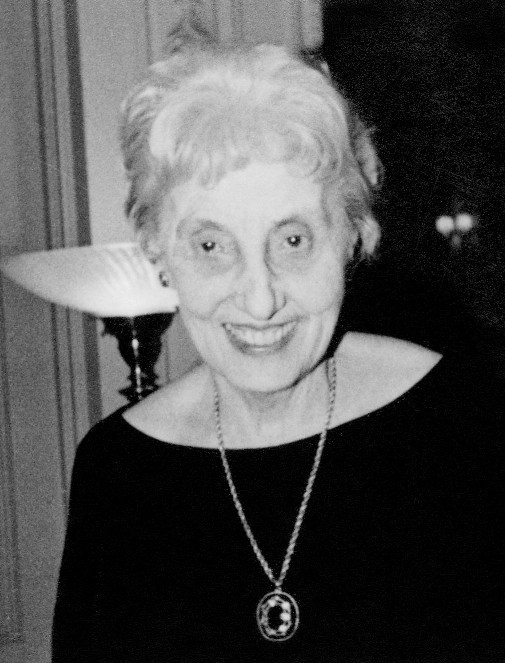
- courtesy of R. Cohen
Abstract: BERL 4
Life and work of the psychiatrist and psychoanalysts Edith Weigert-Vowinckel (1894-1982)
Edith Weigert-Vowinckel (born in 1894 in Düsseldorf, died in 1982 in Chevy Chase) after her medical studies worked as an assistant at the Psychiatric and Neurological Clinic of the Charité Berlin under the direction of Karl Bonhoeffer. At the same time she completed her psychoanalytic training at the Berlin Psychoanalytic Institute. Her training analyst was Carl Müller-Braunschweig. In 1928 she became a member of the German Psychoanalytical Society (DPG) and worked for two years as an assistant physician at the first psychoanalytic clinic Sanatorium Schloss Tegel in Berlin under the direction of Ernst Simmel. In 1932 she married Oskar Weigert, a lawyer of Jewish descent, and gave a birth to a son. In 1933, in the course of the board restructuring she became, as a Non-Jewish, a training analyst and a lecturer of the Institute, some time later also a board member of the DPG. In 1935 she and her family migrated to Turkey, where she had a private practice as allegedly the first psychoanalyst at all in this country. In 1938 she migrated to the USA, became a member of the Washington-Baltimore Psychoanalytic Society, then worked at the Psychiatric Clinic Sheppard and Enoch Pratt. In 1941, she opened a private practice in Chevy Chase. In various authoritative central positions, she was decisively involved in the development of the local psychoanalytic institutions. Because of her interest in the psychotherapy of schizophrenia as well as in interpersonal processes, her work was closely linked with the theories of Harry Stack Sullivan and Frieda Fromm-Reichmann.
Author: Holmes, Maren; Supervisor: Priv.-Doz. Dr. Thomas Müller (University of Ulm / Centre for Psychiatry Südwürttemberg / Charité Berlin) and Prof. Dr. R. Seidel (Institute for Psychology, Free University of Berlin). Project completed.
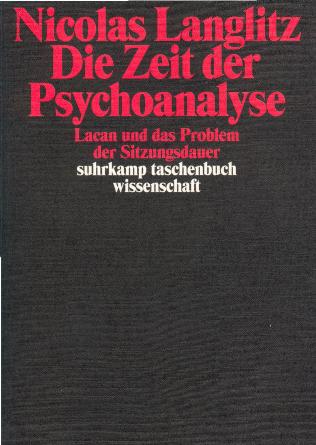
Abstract: BERL 8
The time of psychoanalysis. Lacan and the problem of the session duration.
Based on his notorious handling of the psychoanalytic session duration, Jacques Lacan violated the standards of the International Psychoanalytic Association (IPA). According to these guidelines, psychoanalytic sessions have to take exactly 50 minutes. Lacan saw it as nothing more than formalism: he believed that the talking cure should be oriented towards the content of the speech of the patient and should not be determined by the clock. Nicolas Langlitz examines this controversial technical innovation of the French psychoanalyst against the background of Lacan´s conception of the temporality of the subject. With a wealth of references and materials from philosophy and history of science as well as history of medicine and psychoanalysis, the book unfolds not only an exciting story of psychoanalytic treatment technique, but also extrapolates Lacan´s sophisticated theoretical work from his practice.
Author: Langlitz, Nick
Supervisors: Priv.-Doz. Dr. Thomas Müller (University of Ulm / Charité Berlin) and Prof. Dr. Dr. Rolf Winau (1937-2006), formerly Charité Berlin.
The project is completed. Publication: Suhrkamp Taschenbuch Wissenschaft, Frankfurt 2005, ISBN: 3-518-293575.
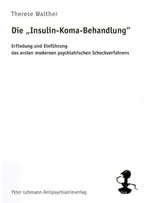
Abstract: BERL 9
„Like a castaway in his bed …“ The insulin-coma-therapy. Invention and implementation of a new treatment method. A study of the discussion in psychiatric professional journals from 1925 to 1937.
The insulin shock was developed at the end of the 1920s. Psychiatric patients were put into a coma with high doses of insulin and then they were awakened with sugar again. The procedure was complex and extremely painful and dangerous for the persons concerned. In 1937, this method was used in all German university hospitals.
Therese Walther studies theories of mental illness, the conception of man of the scientists as well as the concepts on the effect of the insulin shock. The evaluation of patient records and reports of the persons concerned blurs the boundary between human experiment and psychiatric therapy. The work concludes with an overview of the implementation of the method after 1945.
The first edition of the volume “The insulin-coma-treatment. Invention and implementation of the first modern psychiatric shock procedure” was published 2000 by Antipsychiatrieverlag. The new edition is a corrected and updated version of the volume.
Author: Walther, Therese.
Supervisors: Prof. Dr. Manfred Zaumseil (Institute of Psychology, Free University Berlin), Priv.-Doz. Dr. Thomas Müller (University of Ulm / Charité Berlin) and Prof. Dr. Dr. Rolf Winau (1937-2006), formerly Charité Berlin.
The projected is completed. Publication: Peter Lehmann Antipsychiatrieverlag.
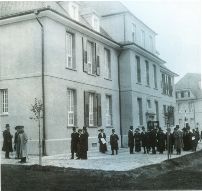
Abstract: REIC 1
The „Großherzogliche Badische Heil- und Pflegeanstalt“ near Konstanz in 1913-2013
A main focus of the research project is, on the one hand, on the research gap regarding the 1920s and early 1930s characterised by the therapeutic innovations in Reichenau (Thumm, Römer). Another focus is devoted to the period after 1945, especially in regard to the question how the Reichenau dealt with the requirements of a modern Western European psychiatry in the context of Baden-Württemberg´s development in the 1950s and 1960s (lack of beds and staff, project “New Building”). The project is carried out against the background of the publications already appeared on the history of the asylum.
Project: Third-party funded research project. Author: Priv.-Doz. Dr. Thomas Müller, N.N.
Planned processing period: Not currently in process.
Abstract: SCHU 1
The Wuerttemberg Asylum of Schussenried. A Psychiatric Space and its Encounter with Literature and Culture ‘outside’.
Schussenried asylum is one of the earliest mental hospitals in the Kingdom of Wuerttemberg, founded in 1875. Its central complex, a former Premonstratensian cloister, in its literal beauty and wealth after secularization (with some latency) seemed to provide an adequate space for the cure of the mentally ill. The building of an asylum reshaped the little and somewhat provincial village in numerous aspects, cultural and economic ones among them. A house-styled journal (the ‘Schallwellen’, 1897-1936, printed in the asylum’s printing-office by a patient named ‘Schall’) will serve as a major source to the presentation. Containing contributions of heterogeneous nature, this journal officially had been created to serve patients and staff but in fact its intention seemed to have been to represent the asylum and even educate the public outside. While this journal was meant to present a ‘modern’ mental hospital to the educated public, its essays undisputedly (though not willingly) did at the same time reflect the political and social development ‘outside the walls of the asylum’ – from the 1890ties’ humanist (and sometimes anti-psychiatric) movement to Nazi politics. The local paradox of a hospital’s population (consisting of staff and patients) ‘educating’ the public in the ‘outside’ space by means of a bourgeois journal is completed by the fact that gifted patients enriched art and culture of the small town. The set of primary sources under study will be completed by a novel of a local writer (W. Schussen, 1908) portraying the social and cultural changes of his hometown after the establishment of the asylum.
Project: Research project, free publications. Authors: Frank Kuhn, PD Dr Thomas Müller.
Project results are published. Processing period: 2007-2012.
Abstract: WEIS 4
Life and work of the psychoanalysts Berta Bornstein (1896-1971) and Stefanie (Steff) Bornstein-Windholzova (1891-1939). Change of knowledge / science by forced migration
The object of this research project is the double biography of two sisters born in Krakau. Their biographies were connected by training as a teacher on the one side with training as a psychoanalyst on the other. The family moved to Berlin, where Berta and Stefanie grew up with two brothers. Berta Bronstein worked initially in social care; some time later she completed training as a teacher and worked then at school for children with educational problems. At the Berlin Psychoanalytic Institute she completed her psychoanalytic training. Because of her interest in child analysis, she went to Anna Freud to Vienna in 1929. Her husband died a few years after the marriage. Because of the political development, she immigrated to the USA in 1938. In New York she became a renowned specialist and trainer in the field of child psychoanalysis.
The teacher and social worker Steff Bronstein completed her psychoanalytic training also at the Berlin Institute. She was interested in educational issues, also in terms of planning and training of teachers. In 1933 she immigrated too, but to Prague, where she led a relevant seminar as a trainer within the context of the activities of the local psychoanalytic study group. In the course of the political developments in Central Europe, in 1937/38 she married for a few months the Jewish-Czech psychiatrist Emmanuel Windholz. This marriage should give her the Czech citizenship, using which she wanted to flee to the USA. However, she could not leave the country anymore and apparently died of a heart attack. As daughters of a Jewish merchant family, both were existentially threatened at the beginning of the National Socialist expansionist policy and suffered an unequal fate. This project focuses especially on the work of these women at the innovative European Institutes and in psychoanalytical groups as well as in the case of Berta Bornstein on her scientific work in the USA.
Research project: Academic qualification work. Supervisor: PD Dr. Thomas Müller.
Currently, the treatment of the subject is exposed.
Abstract: WEIS 7
History and present of coercive measures in psychiatry. The clinical and symbolic meaning of the so-called “caged bed” in European comparison. (AT)
The object of this research project is the current state of the application of the coercive measure “caged bed” in the psychiatry, which in some European states, or to be precise, also in the states of the European Union, is now out of practice. In other countries, the coercive measures are still a part of the psychiatric treatment. The indication of the coercive measures in various contexts led and continues to lead to committed discussions. Of particular interest on this research object is its emblematical importance in the (history of) psychiatry. The coercive measures like the so-called “caged bed” were regularly and preferred discussed by the physicians, law representatives, patients as well as by the rest of the civil society. On the historical level, the connections between the aspect of the coercive measures and the historical anti-psychiatric movements of the 19th and 20th century can be made.
Project: Akademic qualification work. Authors: N.N. Supervision: PD Dr. Thomas Müller, Prof. Dr. Tilman Steinert.
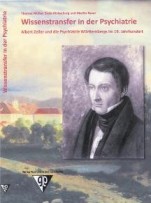
Abstract: WINN 1
Knowledge transfer in psychiatry. Albert Zeller and the Wuerttemberg psychiatry in the 19th century
The object of this research project is the asylum Winnenden under the direction of Albert Zeller (1804 – 1877). The project includes some individual priorities: the working relationship between Ludwig Binswanger and Albert Zeller as well as the model function of Winnenden concerning the asylums under the direction of Binswanger; Albert Zeller´s psychiatric research trips in a comparative perspective; Zeller´s travel diaries as a source of history of mentality; the psychiatry´s daily routine during the life of Albert Zeller from the patient´s perspective.
Project: Research project with the aim of publication of an antology. Authors: Frank Kuhn, Dr. Angela Roth, Prof. Dr. Albrecht Hirschmüller, Martin Rexer, PD Dr. Thomas Müller (ed.).
Project is completed.
Abstract: ZWIE 3
The treatment of mentally disabled people in the Münsterklinik Zwiefalten over two centuries
This project deals with mentally handicapped patients with or without additional mental disorders in the Münsterklinik Zwiefalten. For this purpose, 150 patient files from 1812 to 1982 were exemplary taken and systematically researched. In addition to socio-demographic data, there are treatment variables such as length of hospital stay, type of treatment etc. extracted from the basic data. The focus is on the description of the change which has taken place in the understanding of this disorder image and on the change of the role of the asylums in the treatment of these patients.
Project: Academic qualification work. Author: Francisca Kurz. Supervisors: Prof. Dr. Gerhard Längle, Priv.-Doz. Dr. Thomas Müller. Coordination: Daniela Croissant. Project is completed / Results were published.
Planned processing period: 2008-2012.
Abstract: ZWIE 4
Where from and where to: history and aftercare of schizophrenic patients of the Münsterklinik Zwiefalten from 1812 to 1982
On each representative sample of ten-years-periods, the admissions and discharges of patients are examined. The focus is on the type of the assignment and the origin of the patients as well as the type of preparation of discharge and aftercare. Another issue is the development of the psychiatric setting outside the clinic. The basis of the project is the whole record of the file documentations on the one hand and the basic documentation of the clinic – as soon as available – on the other hand.
Project: Academic qualification work. Author: Susanne Fischer. Supervisors: Prof. Dr. Gerhard Längle, Priv.-Doz. Dr. Thomas Müller. Coordination: Daniela Croissant.
Project is completed / Results are published. Planned processing period: 2008-2012.
Abstract: ZWIE 11
The development of the psychiatric nosology and classification in the 20th century and the related human images
This project aims to present how the psychiatric nosology and classification as well as the linked approach of the treating physicians have changed during the 20th century. The focus of the research is on the changes of the concepts regarding the clinical picture of schizophrenia. The work will deal not only with the development of the psychiatric nosology in the 20th century, but also with the respective concepts of human images. The creation of the classification scheme closely related to the nosology reached its peak in the 20th century. Therefore, the history of the various classification systems should also be briefly outlined. The changes concerning the frequency of the disorders treated are presented in a statistical part. The files of the inventory B and C of the Münsterklinik Zwiefalten are the basis of the approach. This means, these documents represent birth cohorts after 1900, which were taken at the latest by 1984 in the Münsterklinik. The cross-section analyses in 10-years-intervals (if a new classification scheme was meanwhile introduced, it should be also considered) are carried out and the changes of the frequencies of the clinical pictures are showed on the cross-sectional and longitudinal basis. The cross-section analyses regarding the representation of the changes should also be carried out in a qualitative-descriptive part of the project. Furthermore, the then applicable concepts should be represented using the observation of individual files. Special attention should be paid to the human images associated with the respective concepts.
Project: Academic qualification work. Author: Dipl. Psych. Daniela Croissant. Supervision: Prof. Dr. Gerhard Längle, Priv.-Doz. Dr. Thomas Müller.
(Project is currently suspended)
Abstract: ZWIE 12
The elevation of the occupancy figures until 1933 including the contemporary classification of disease diagnoses
This project compiles a total view of the annual occupancy figures based on the main books, annual reports and station-specific occupancy lists. The occupancy figures quoted in the literature differ from each other. Thus, there is no or not enough information on symptoms of the patients until the turn of the 19th into 20th century. The consideration of the disorders can provide information on the phases of the changing history of Zwiefalten as a nursing, pure or mixed asylum and sanatorium. According to the current working hypotheses, the status of the asylum Zwiefalten had far-reaching consequences for the grant of financial funds as well as for introduction of new treatment forms.
Project: Research work for free publication. Author: Bodo Rüdenburg. Coordination: Daniela Croissant.
(The project ist currently suspended)
Abstract: ZWIE 13
The determination of the nature of the asylums, from which the patients were referred and in which they were discharged
This project deals among others with care institutions, foster homes as well as other asylums. The elevation of the origin and discharge asylums contributes to the presentation of the development and specialization of psychiatric care. The planned elevation enables an overview of the relevant health-policy planning in the Kingdom of Wuerttemberg. The project evaluates the archive documents on the medical sector in the Main State Archives Stuttgart.
Project: Research work for free publication. Author: Bodo Rüdenburg. Coordination: Daniela Croissant.
(The project is currently suspended)
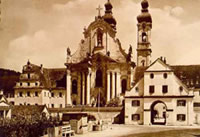
Kurzbeschreibung: ZWIE 14
Walking through the Münsterklinik Zwiefalten
This project deals with the organisation of a medical-historical and modern clinic walk in the Münsterklinik Zwiefalten. A “round walk” will be created after completing of the necessary research on the institutional, medical and social history of the Münsterklinik Zwiefalten. The round walk will give information about historical important buildings and objects as well as modern elements in and around the monastery complex of the clinic Zwiefalten. Historical research results will be “translated” for the visitors and could be offer to clinic staff, patients and their families as information. The planned medical historical round walk includes an inner as well as an outer tour, which requires an authorised access, because some parts of the walking areas are used by the clinic. A medium-term aim of this project is the presentation of the round walk in the internet, so that interested persons could virtually walk through the clinic without being there.
Project: Medical-historical and modern clinic walk. Supervisor: Ralf Aßfalg. Elaboration: Bettina Fath, Heinz Baumeister. Supervisor: Priv.-Doz. Dr. Thomas Müller. Cooperation:
Processing period: 2008-2009.
Kurzbeschreibung: ZWIE 15/EUROPA 4
From South Tyrol to Wuerttemberg. The “resettlement” of South Tyrolean psychiatric patients under the German-Italian option agreement
Object of this research is the procedure of the transfer of South Tyrolean patients to the South Wuerttemberg asylums Zwiefalten und Schussenried as well as partly to Weissenau in 1940. Objects of interest are the state pre-negotiations, the so-called option agreements between the German Reich and Italy, as well as the treatment of the South Tyrolean patients in the asylums themselves. On the one hand, there is to debate on the question of the treatment of these patients in comparison with the local patients. On the other hand, against the background of the current state of knowledge it must be assumed that there was discrimination (organisational, foreign-policy etc.) of the South Tyrolean patients compared with the so-called “ethnic German resettlers” from other regions or so-called “scattered settlement” abroad. The so-called repatriations or negotiations between the legal successor states on the transfer of the patients started in 1945 represent a further comparison level.
Project: Academic qualification work of the cooperation partner / extended research work for free publication. Author: Maria Fiebrandt (Dresden University of Technology) in collaboration with Bodo Rüdenburg and Priv.-Doz. Dr. Thomas Müller. Project is completed. Results see „Publications“.
Kurzbeschreibung: ZWIE 16
The treatment of depression and mania in the Münsterklinik Zwiefalten over 200 years
Object of this research are patients of the Münsterklinik Zwiefalten with the clinical pictures or symptom complexes of depression and mania. There are 150 patient files from 1812 to 1982 exemplary taken and systematically researched with regard to a relevant question schema considering the change in definition and nomenclature of the above mentioned clinical pictures. In addition to socio-demographic data, there are treatment variables such as a period of hospitalization, type of treatment etc. extracted from the basic data. The focus of the project is on the description of the change that has taken place by means of understanding of this disorder beyond the research period.
Project: Academic qualification work. Author: Dieter Becker. Supervision: Priv.-Doz. Dr. Thomas Müller, Prof. Dr. Gerhard Längle. Coordination: Daniela Croissant.
Project is completed and published. 2008—2012.
Kurzbeschreibung: ZWIE 17
Posttraumatic stress disorder among soldiers of the First and Second World Wars
Due to the current political situation and change of the German foreign policy as well as the presence in the press and public, the subject on the consequences for people taking part in war has become highly topical. The war with its foreign missions in Kosovo, Iraq, Chechnya, Afghanistan and other places has raised public awareness for these issues. There are many examples of it: severely traumatised people seeking and finding refuge in Germany, soldiers on foreign operations or physicians working in war zones. It can be assumed that after the experiences of the 20th century, the treatment of soldiers (for instance, soldiers traumatised by the foreign operation in Afghanistan and retired then from military service) in public hospitals will be relevant once again in the 21st century. This project focuses on the treatment of those patients, who became ill as soldiers of the two World Wars and were then treated in the former asylum Zwiefalten. Regarding nosological categories, the project deals with the question, whether symptoms, which these patients had, could be associated with the post-traumatic stress disorder today. According to the analysis of the patient files of the First and Second Wars, it should be studied, how the occurring symptoms of traumatised soldiers were treated in this hospital. The research interest of the project refers to the question, to what extent the treatment of the so-called posttraumatic stress disorders was relevant in the daily clinical practice of a public hospital.
Project: Academic qualification work. Supervisor: Prof. Dr. Gerhard Längle and Priv.-Doz. Dr. Thomas Müller. Currently, the treatment of the subject is exposed.
Wissenschaftliche Publikationen zu den genannten und weiteren Forschungsprojekten sind gesondert und unter folgender Kontaktadresse erhältlich:
Prof. Dr. med. Thomas Müller
Leiter des Forschungsbereichs Geschichte und Ethik in der Medizin
Klinik für Psychiatrie und Psychotherapie I der Universität Ulm/
Zentrum für Psychiatrie Südwürttemberg
Koordinator „Historische Forschung“ der Zentren für Psychiatrie in Baden-Württemberg
Weingartshofer Strasse 2
D-88214 Ravensburg
eMail:
th.mueller![]() zfp-zentrum.de/th.mueller
zfp-zentrum.de/th.mueller![]() uni-ulm.de
uni-ulm.de
Tel.: 0049-(0)751-7601-2217 (Sekr.: -2519/ -2216)
Forschungsbereich Geschichte und Ethik in der Medizin
http://www.forschung-bw.de/history.html
Württembergisches Psychiatriemuseum
http://www.wuerttembergisches-psychiatriemuseum.de/
Verlag Psychiatrie und Geschichte
http://www.wuerttembergisches-psychiatriemuseum.de/index.php?section=verlag
